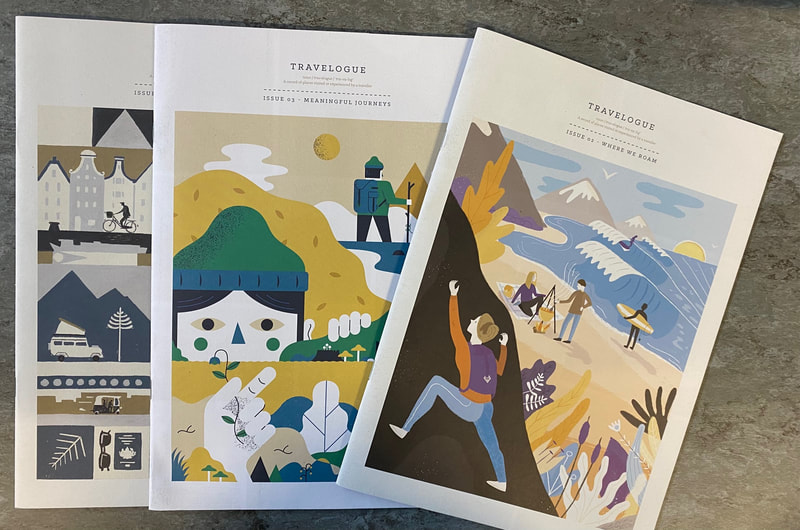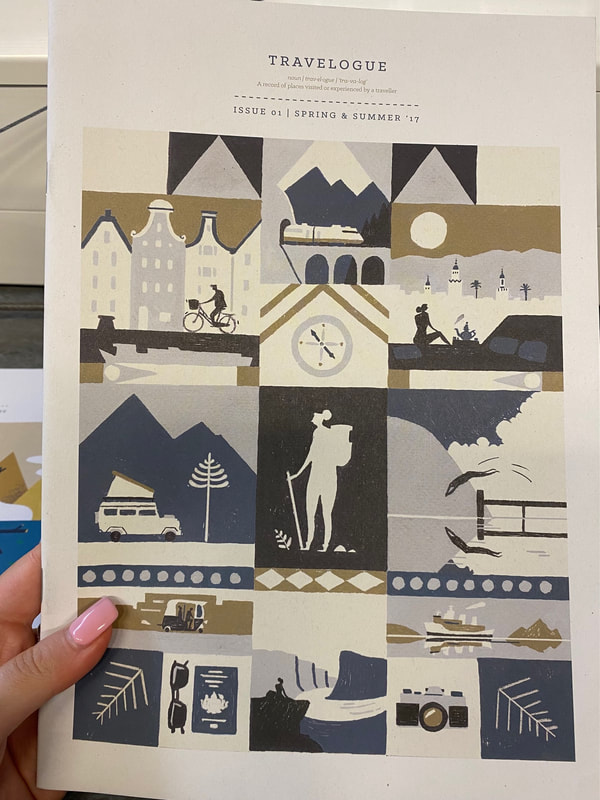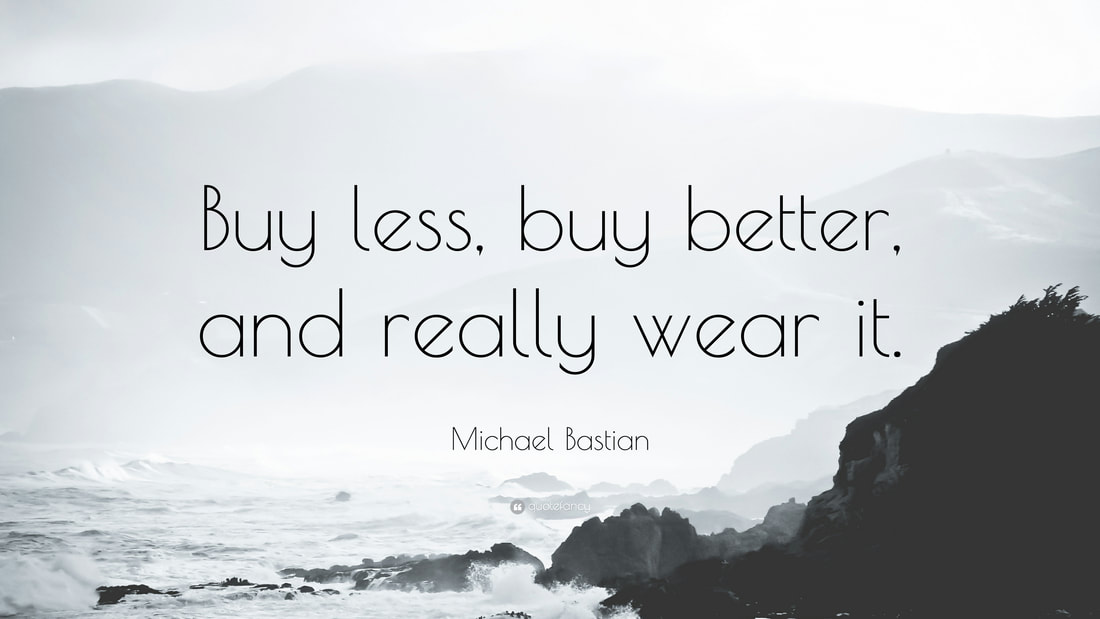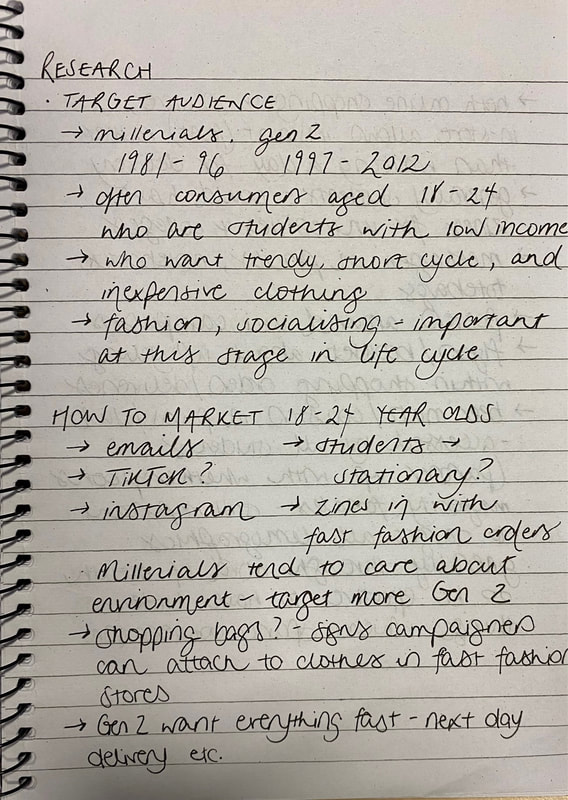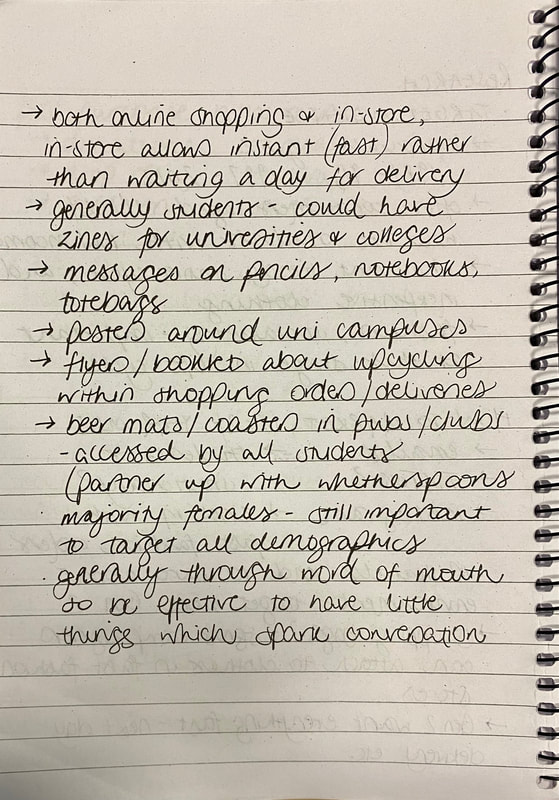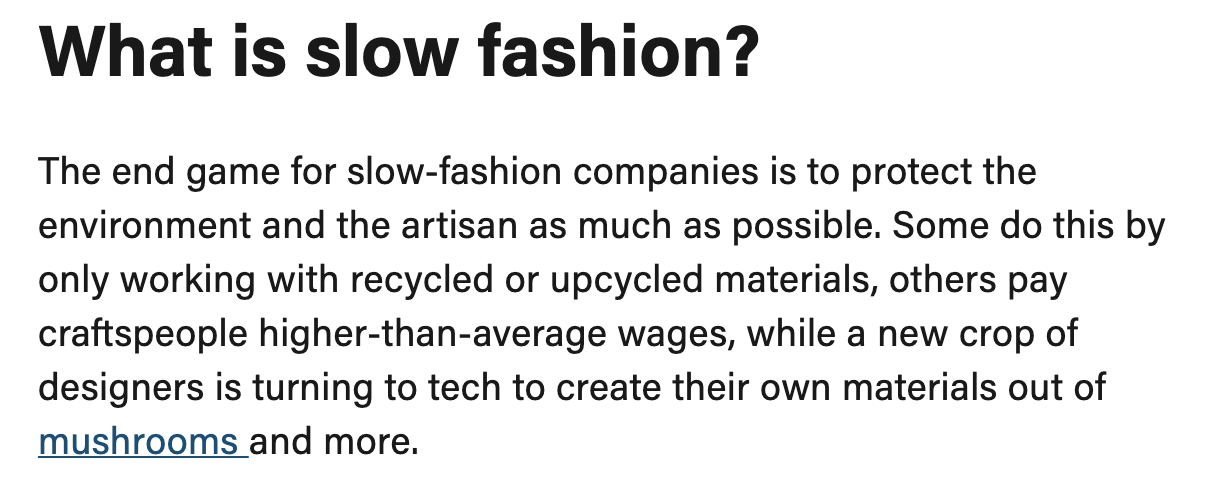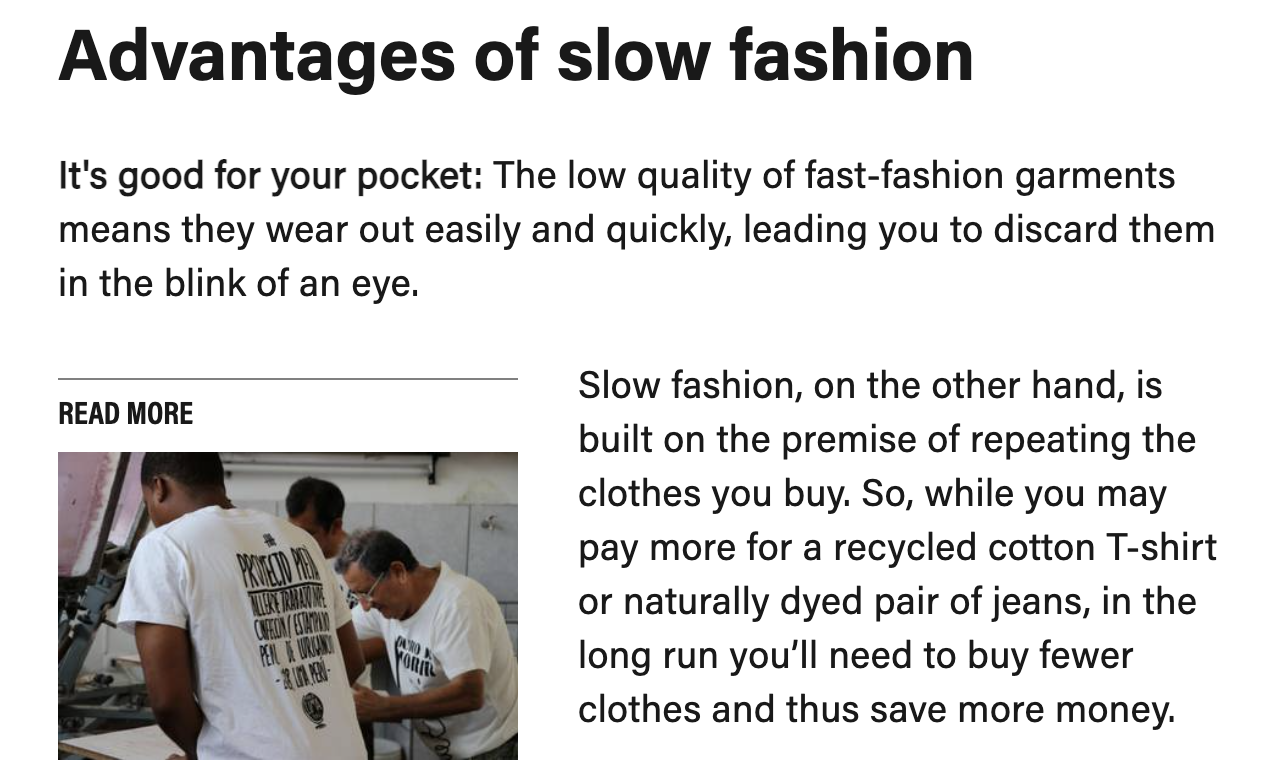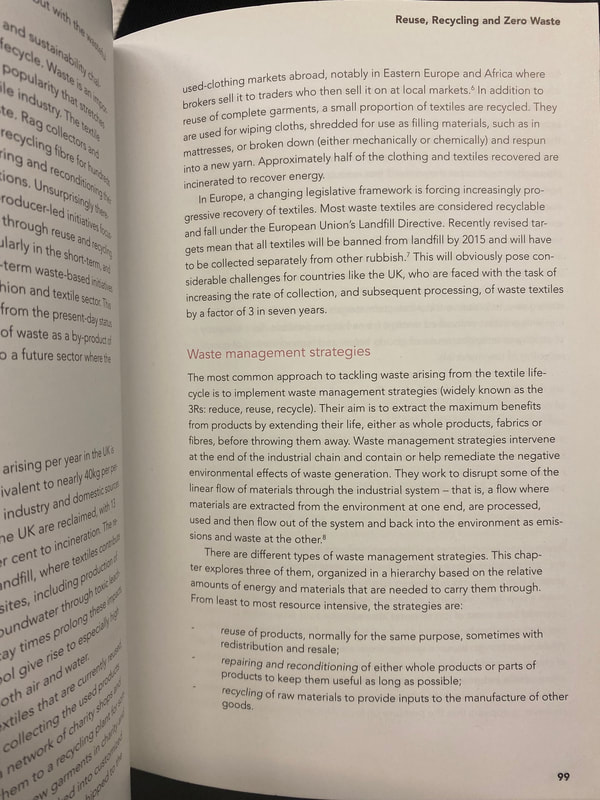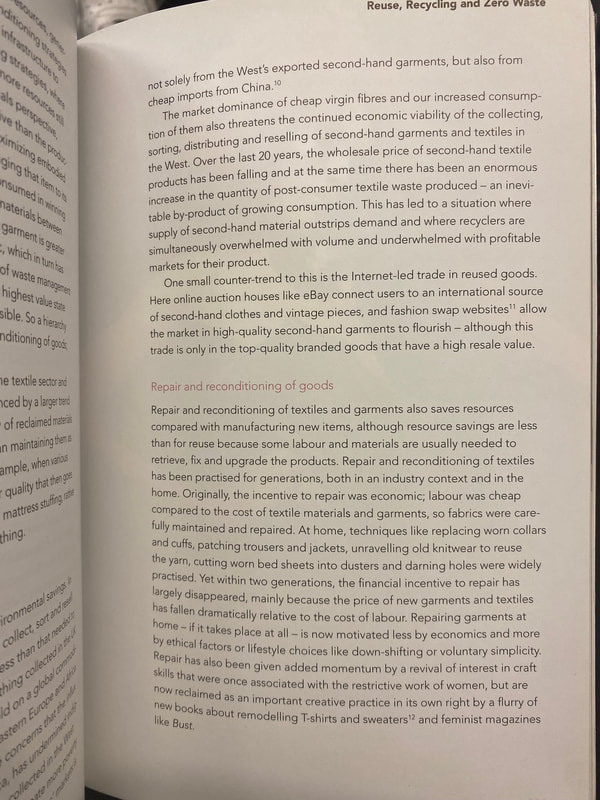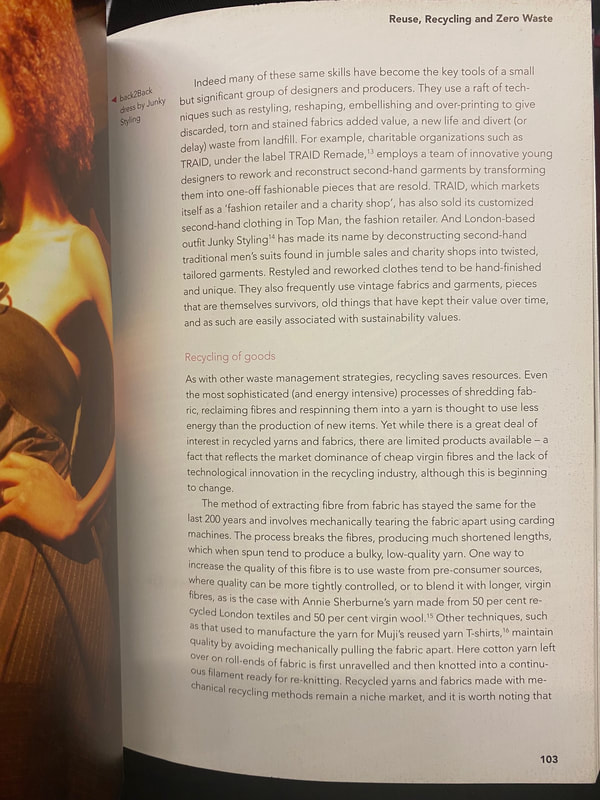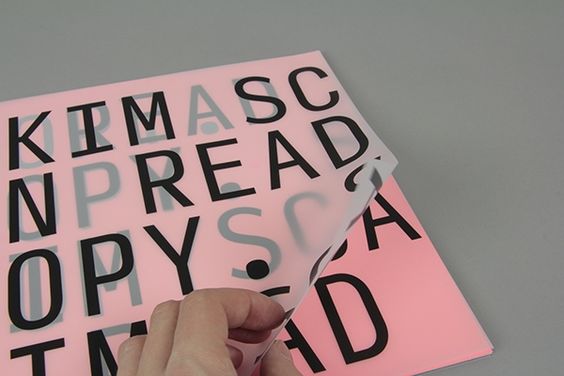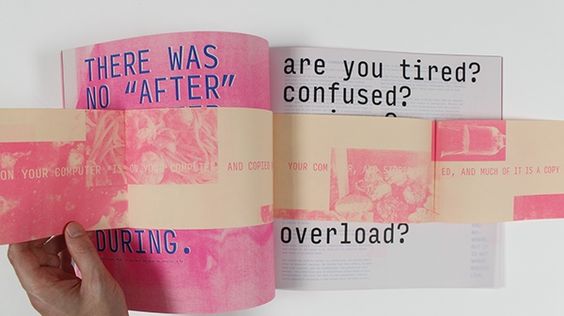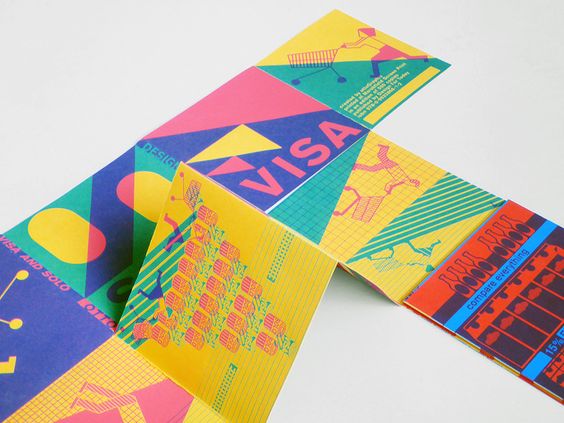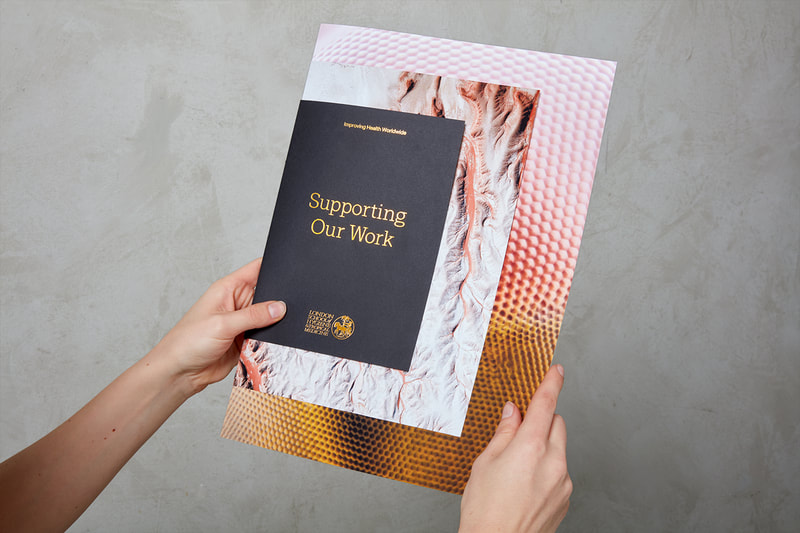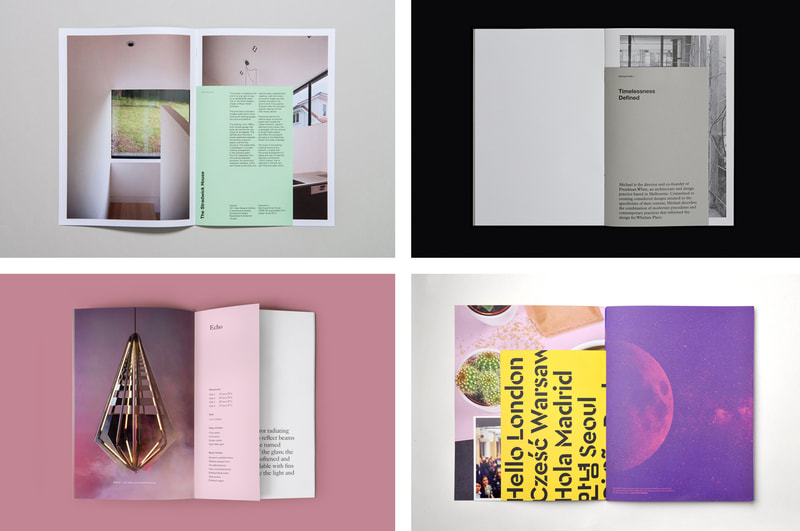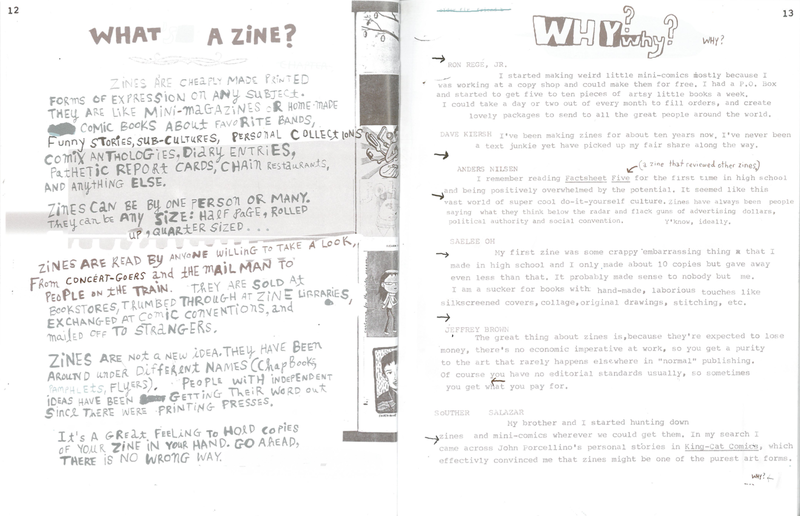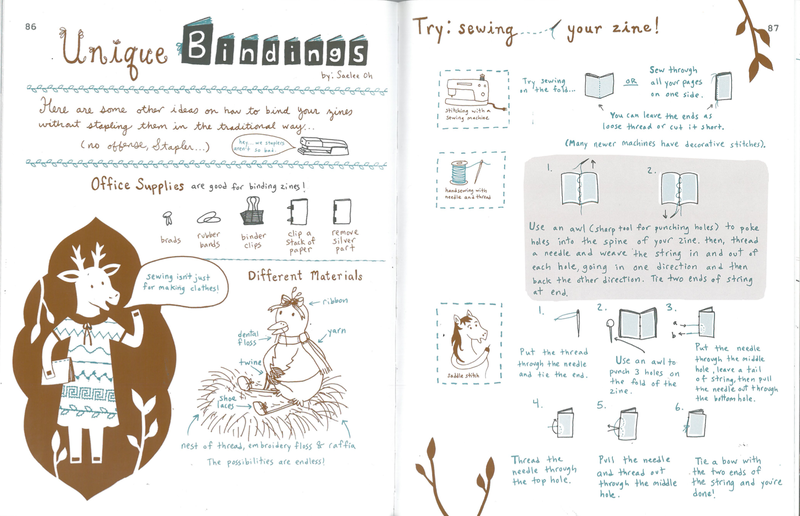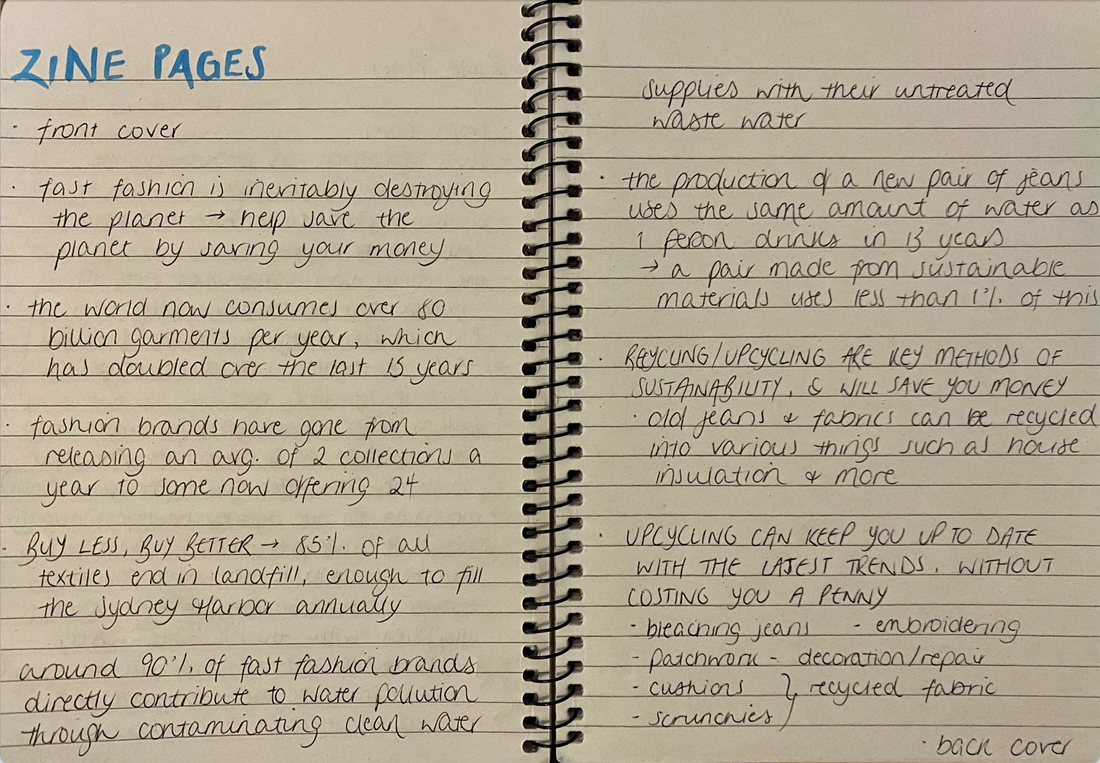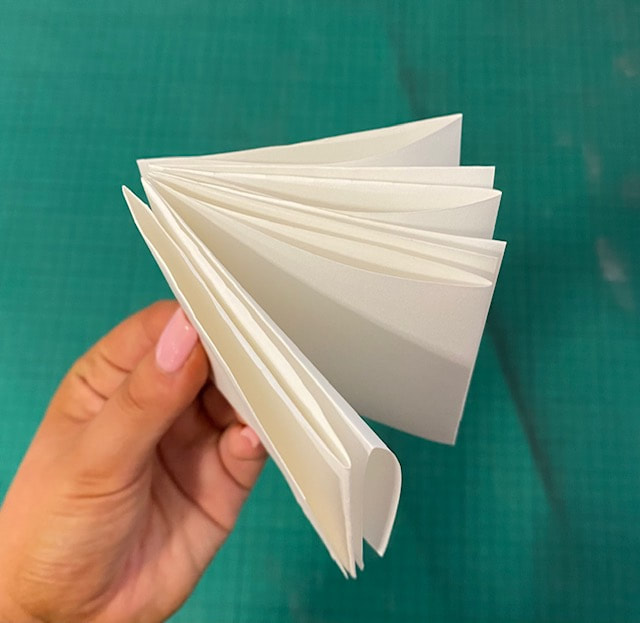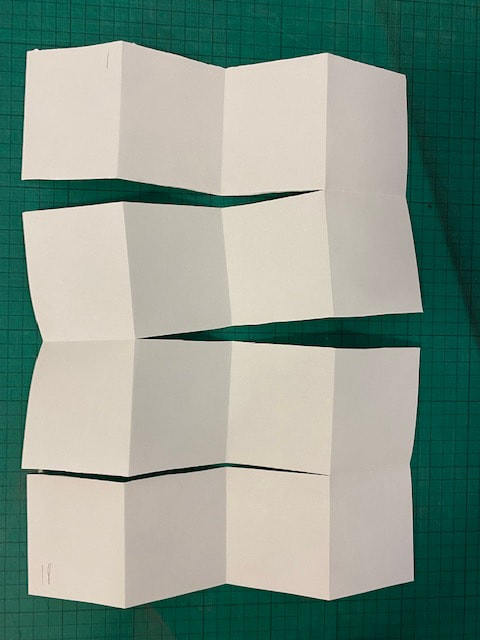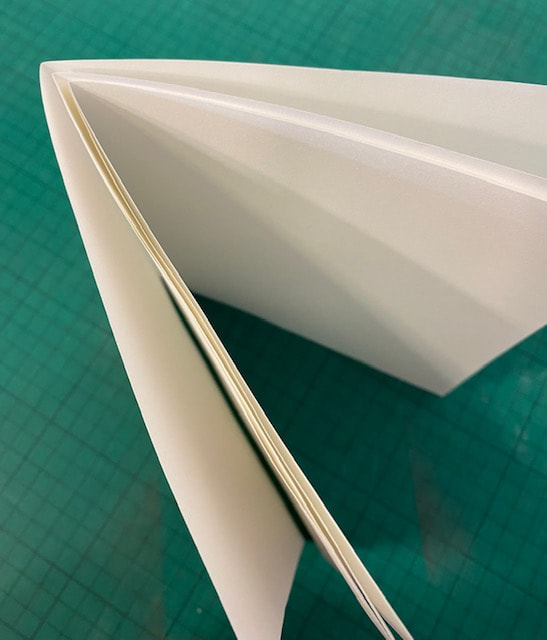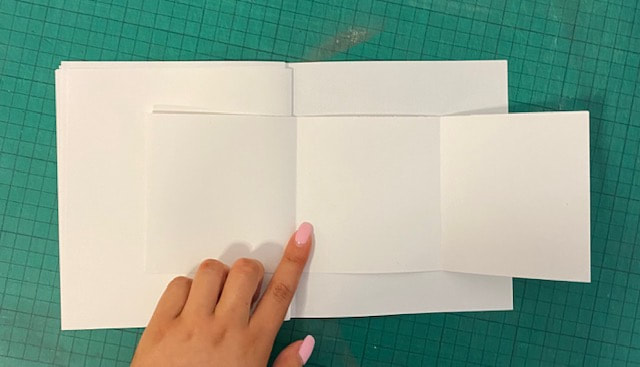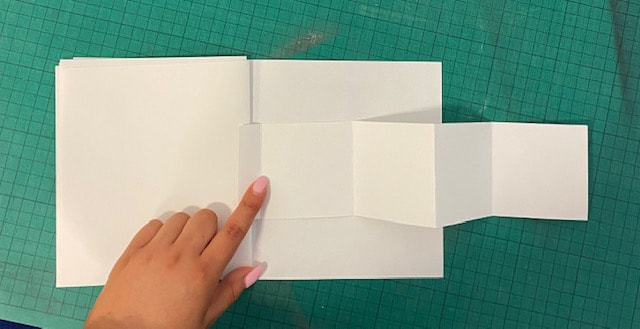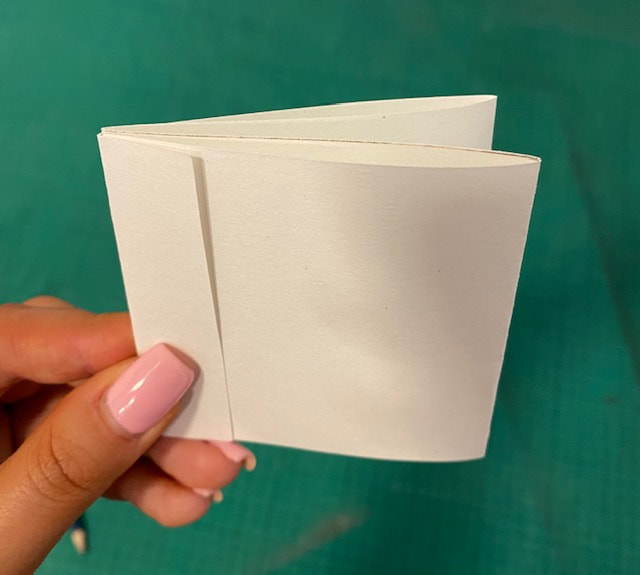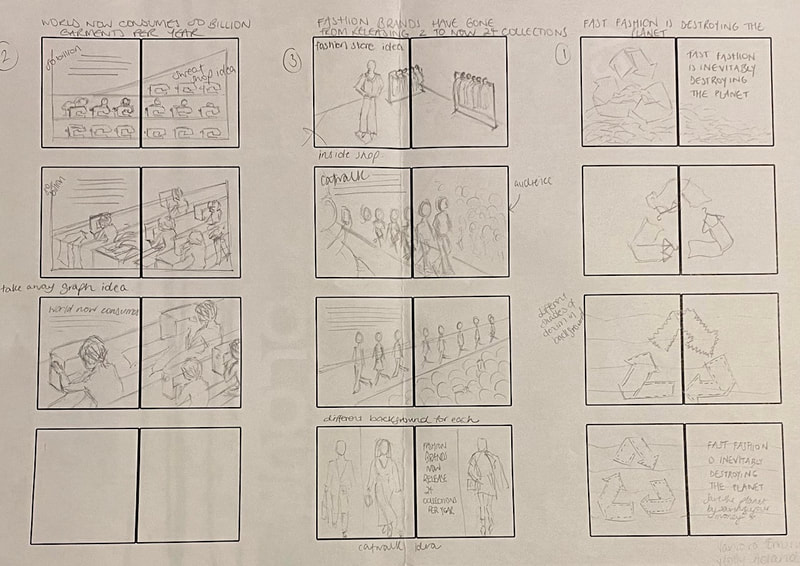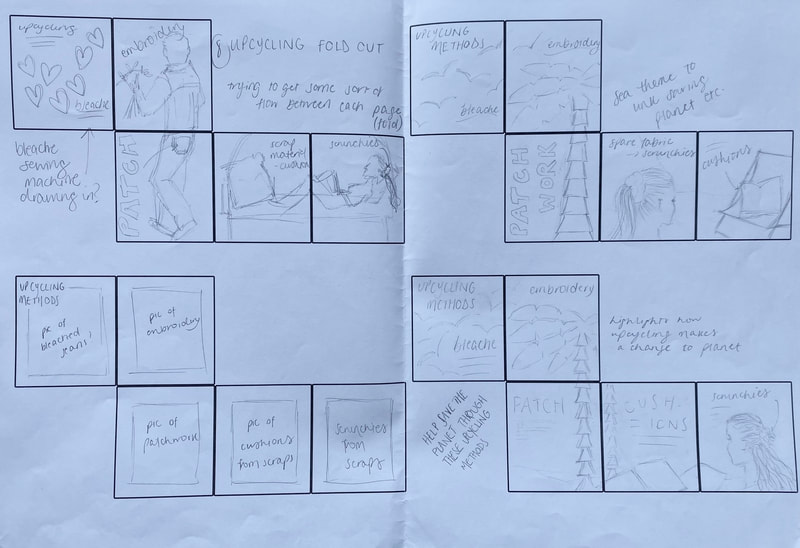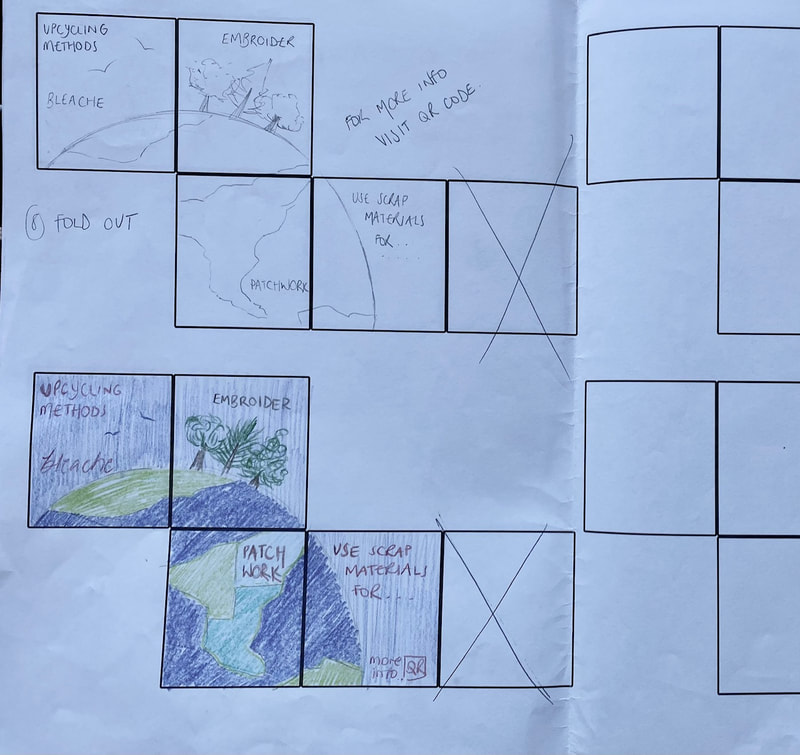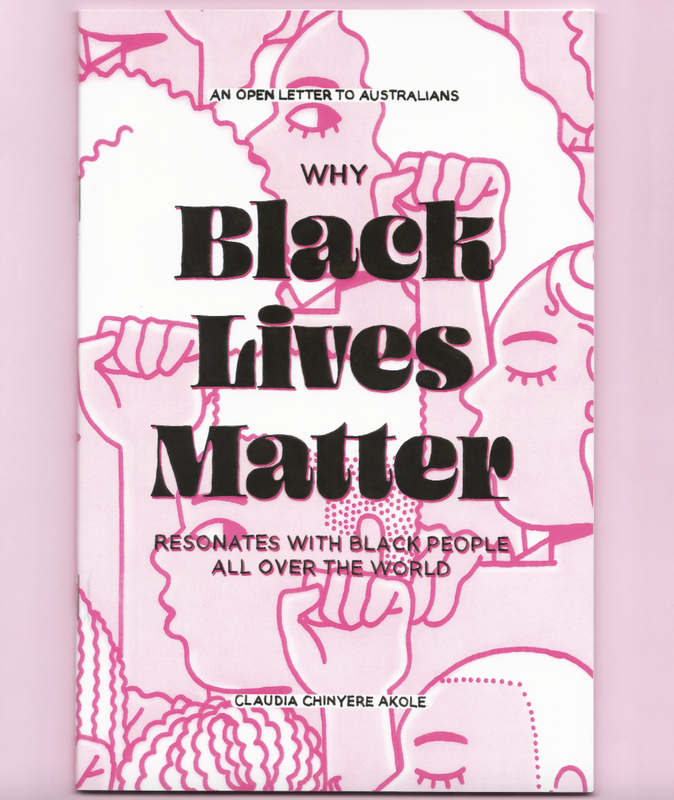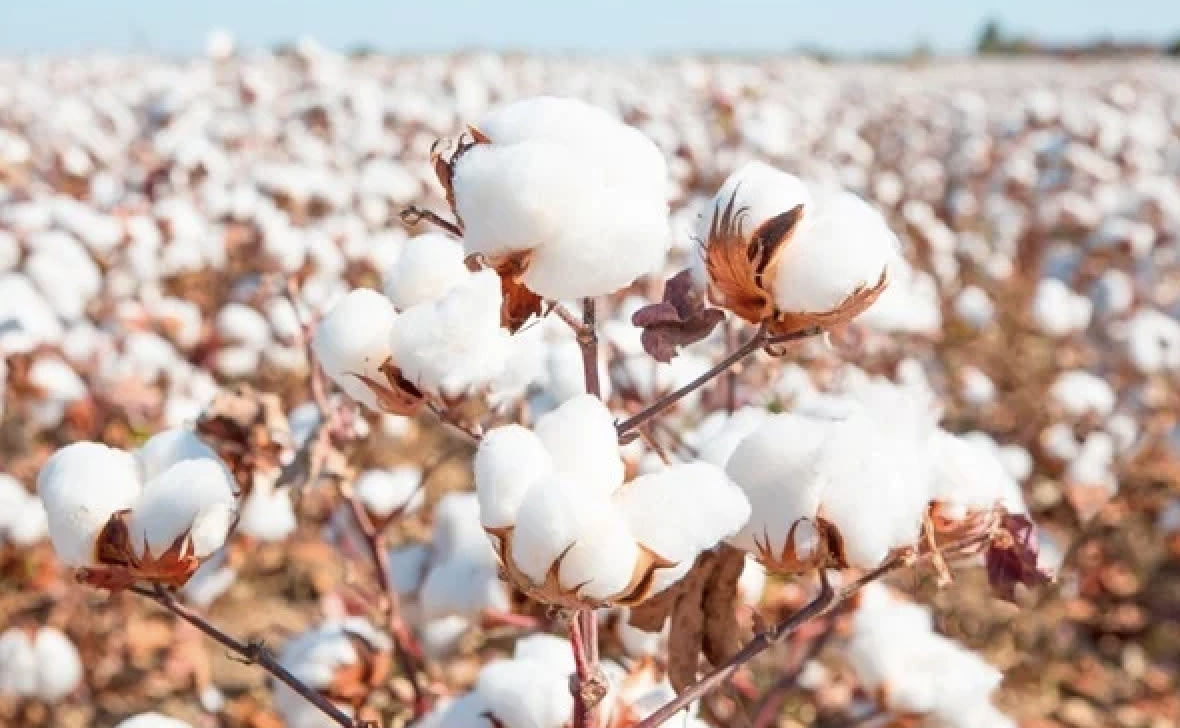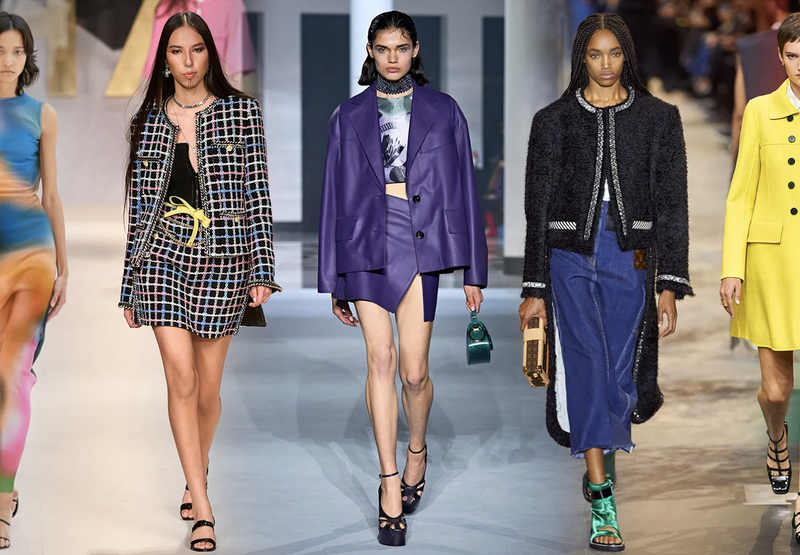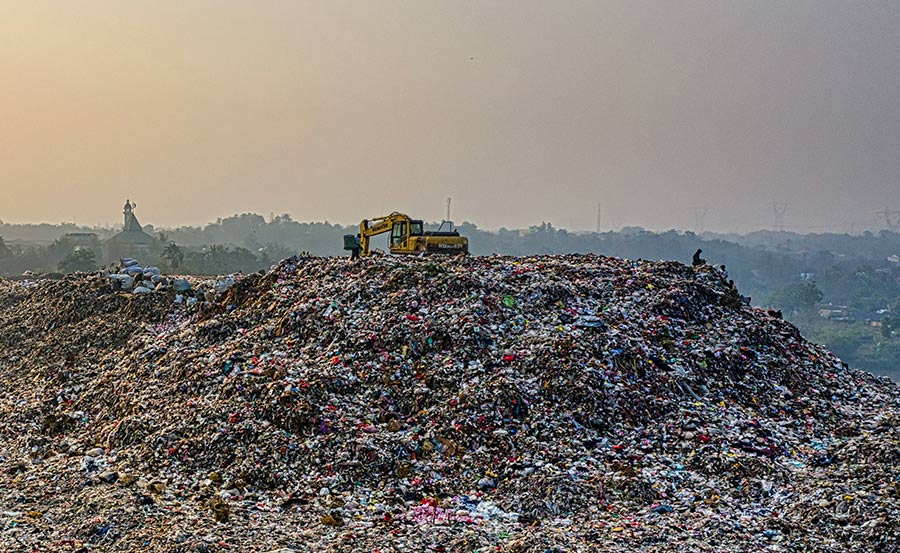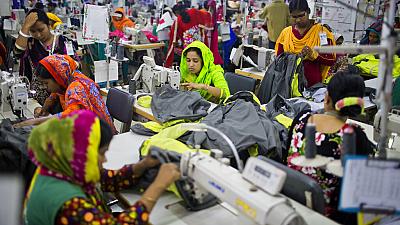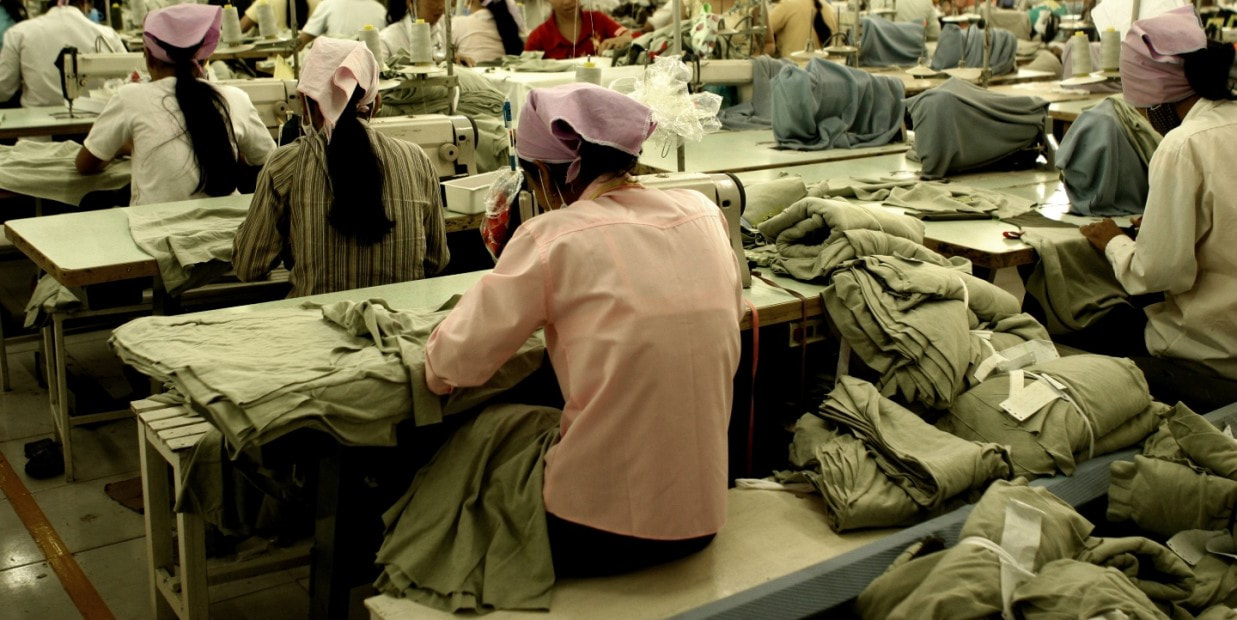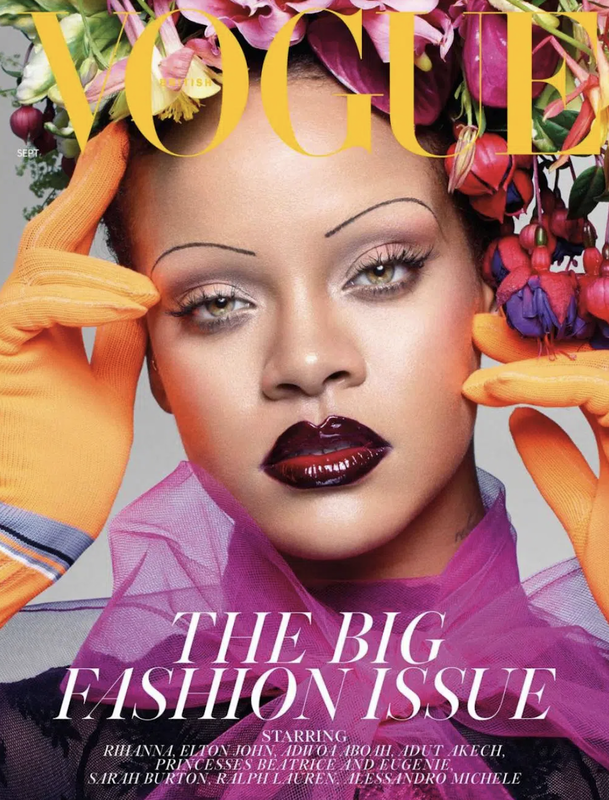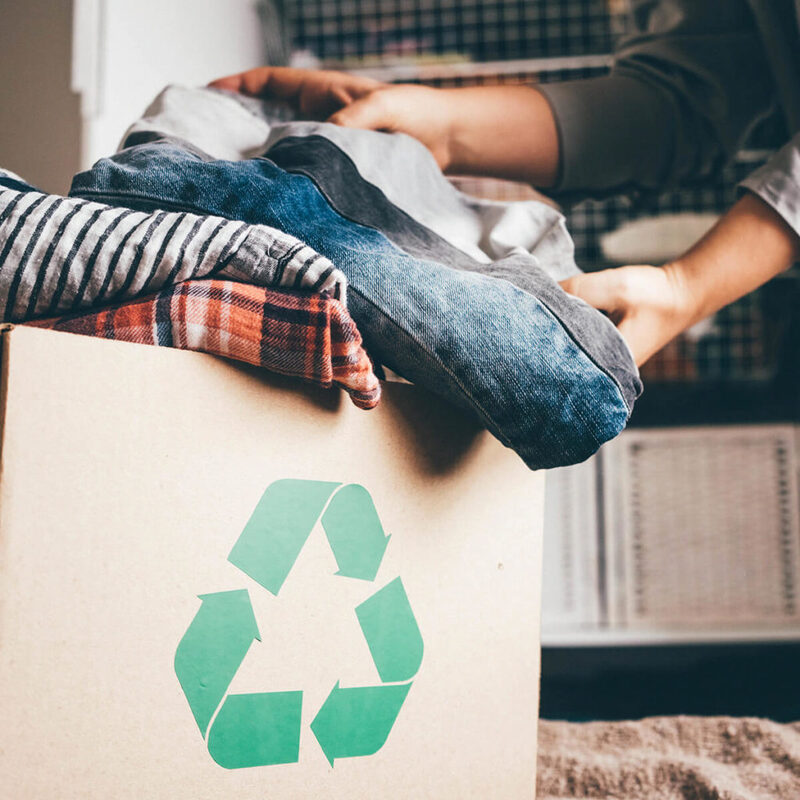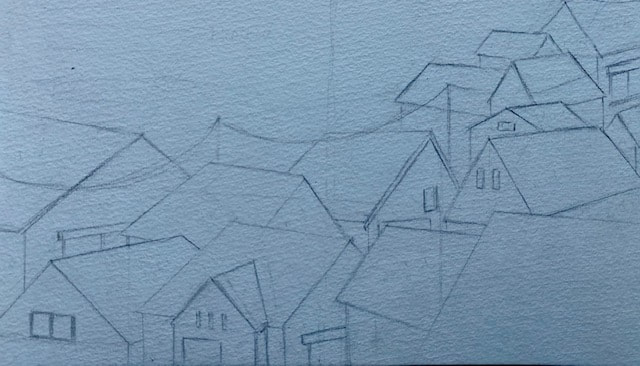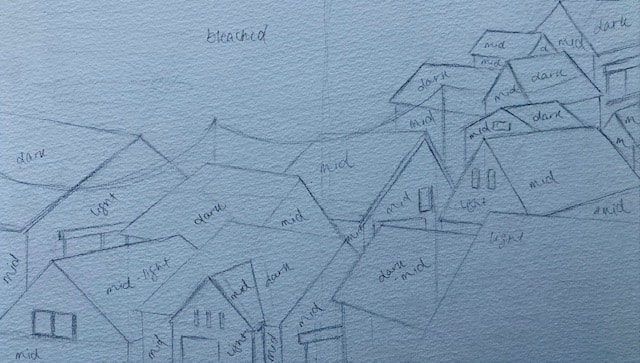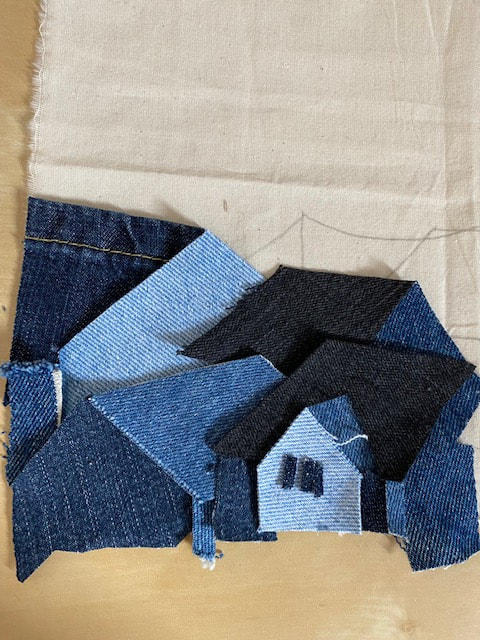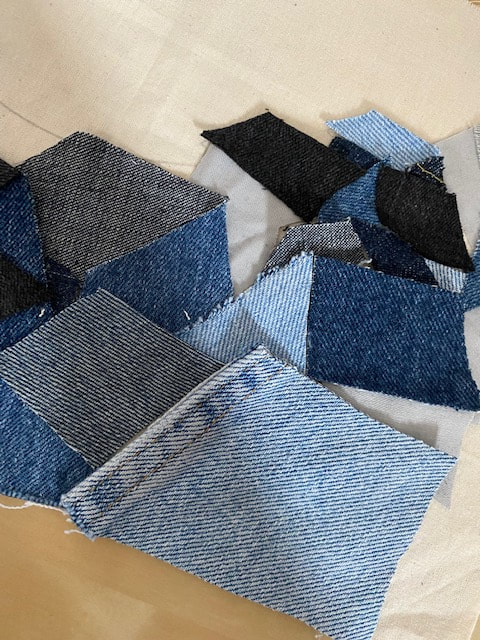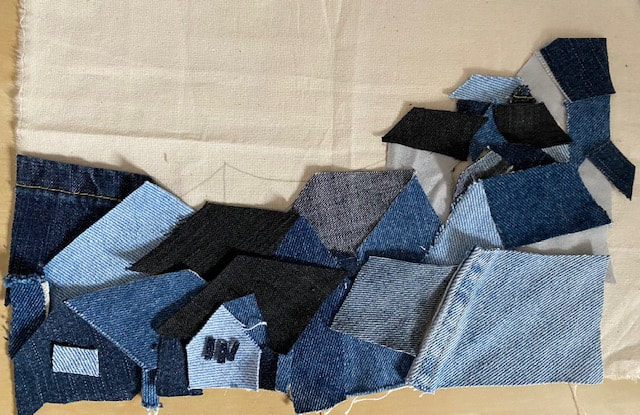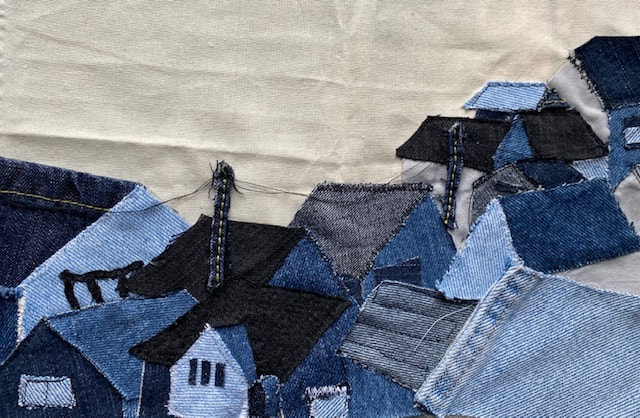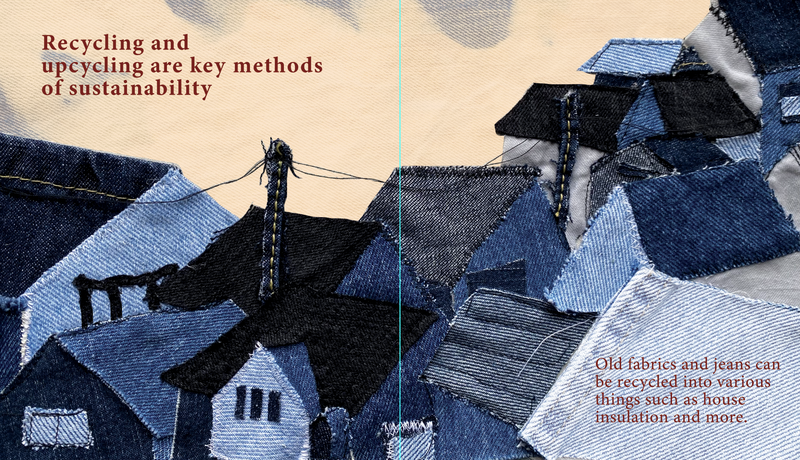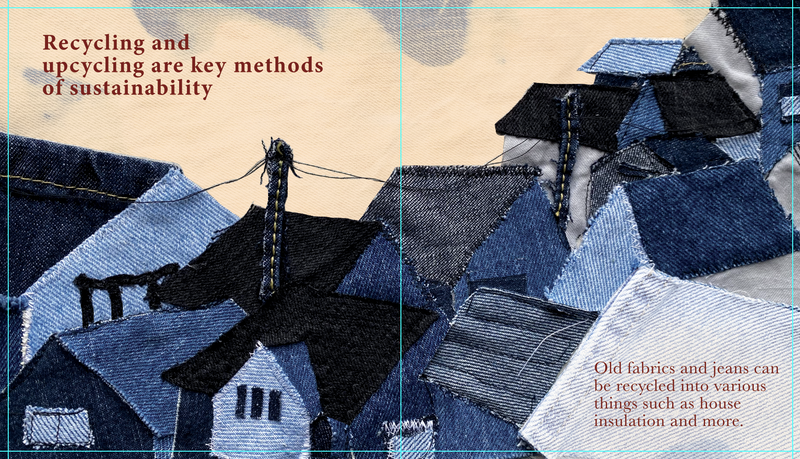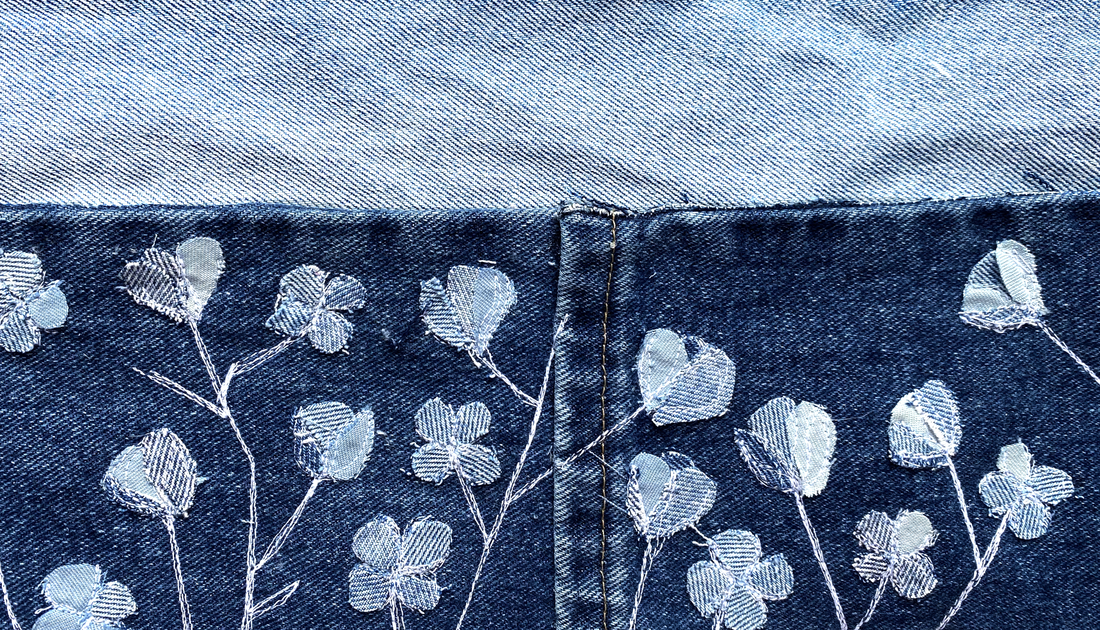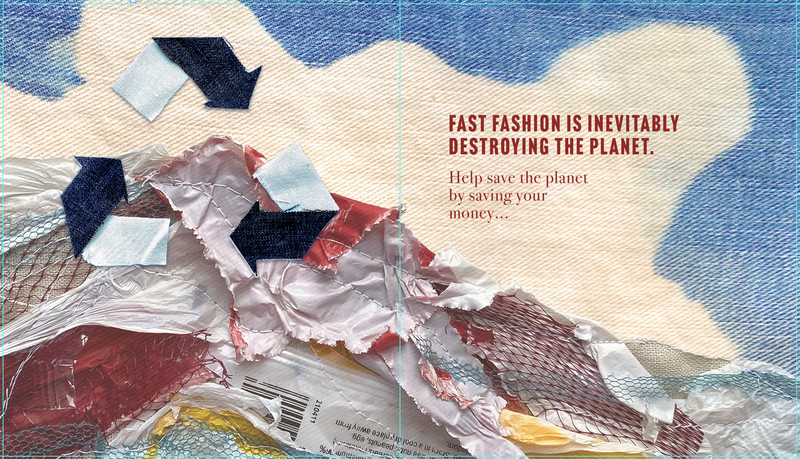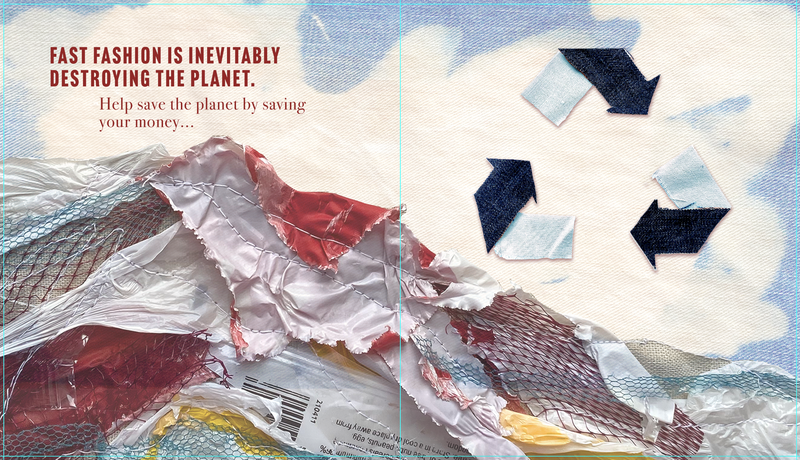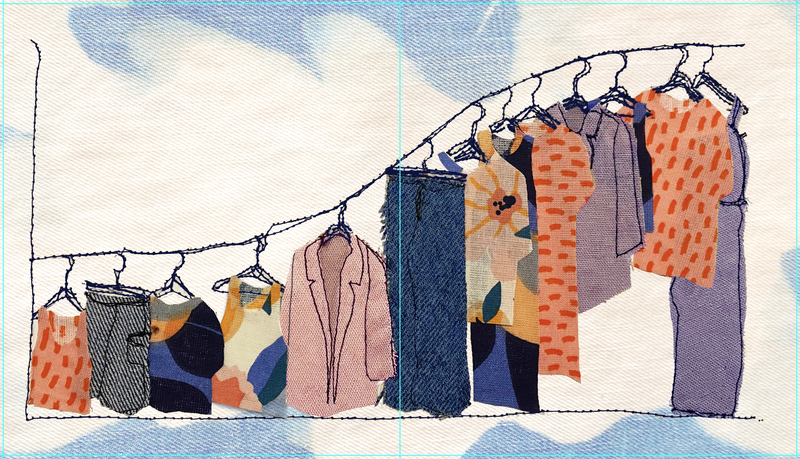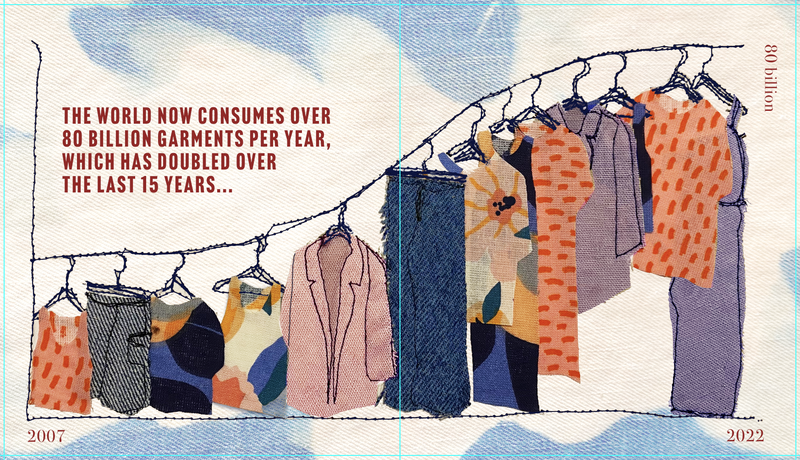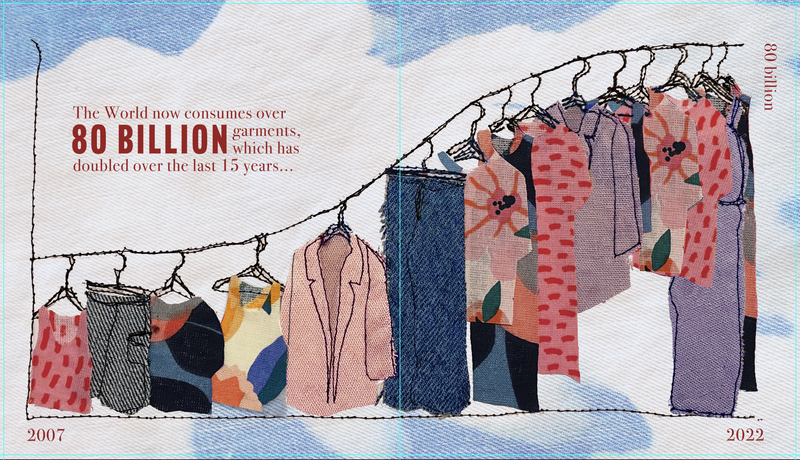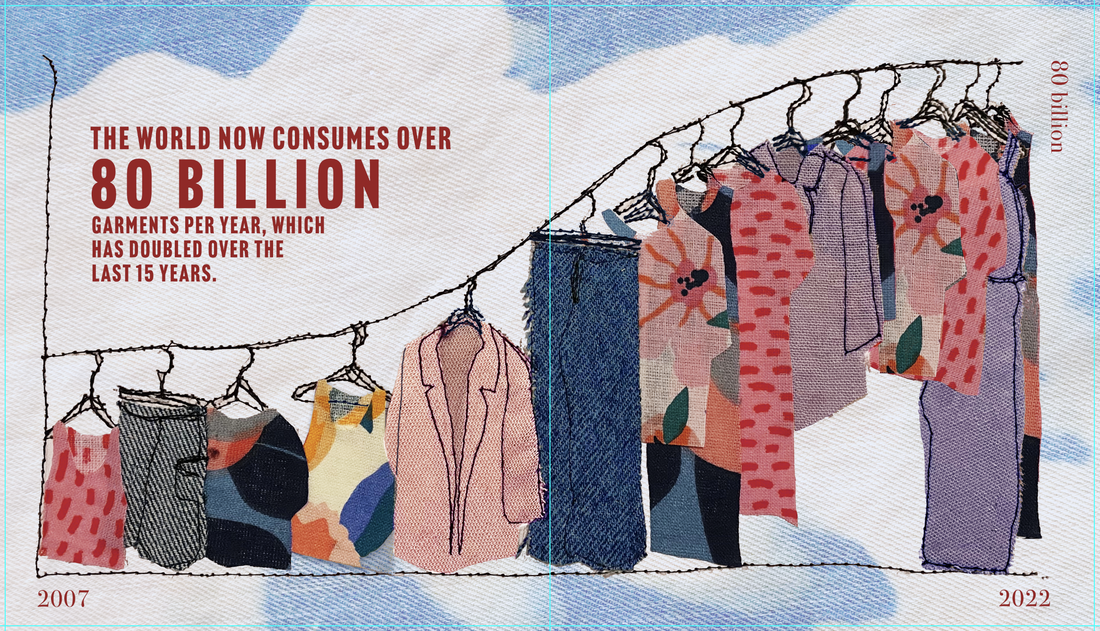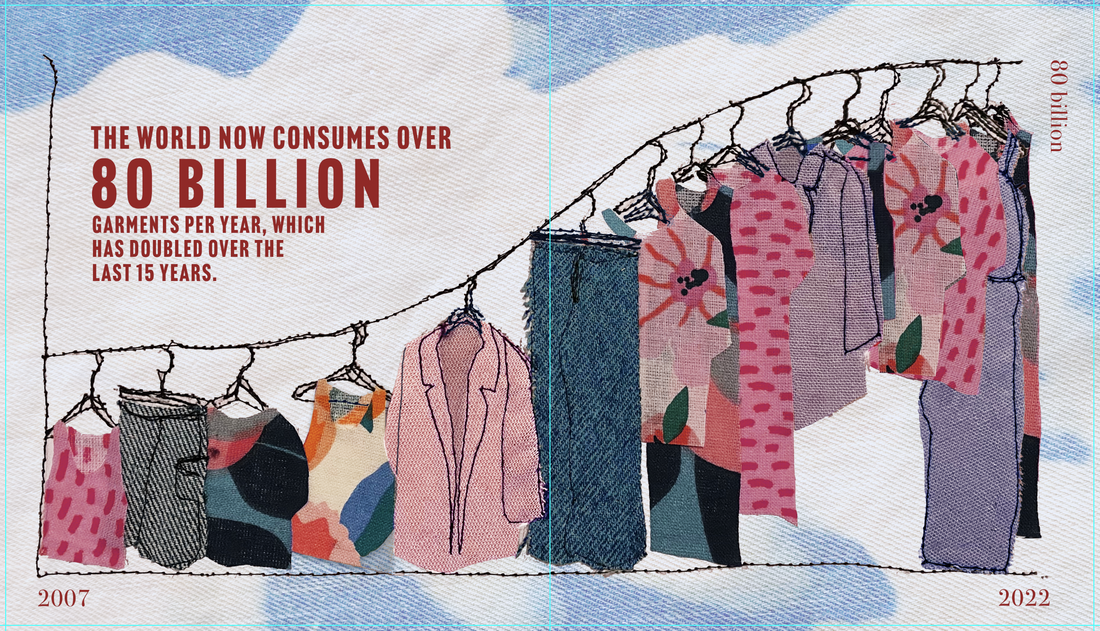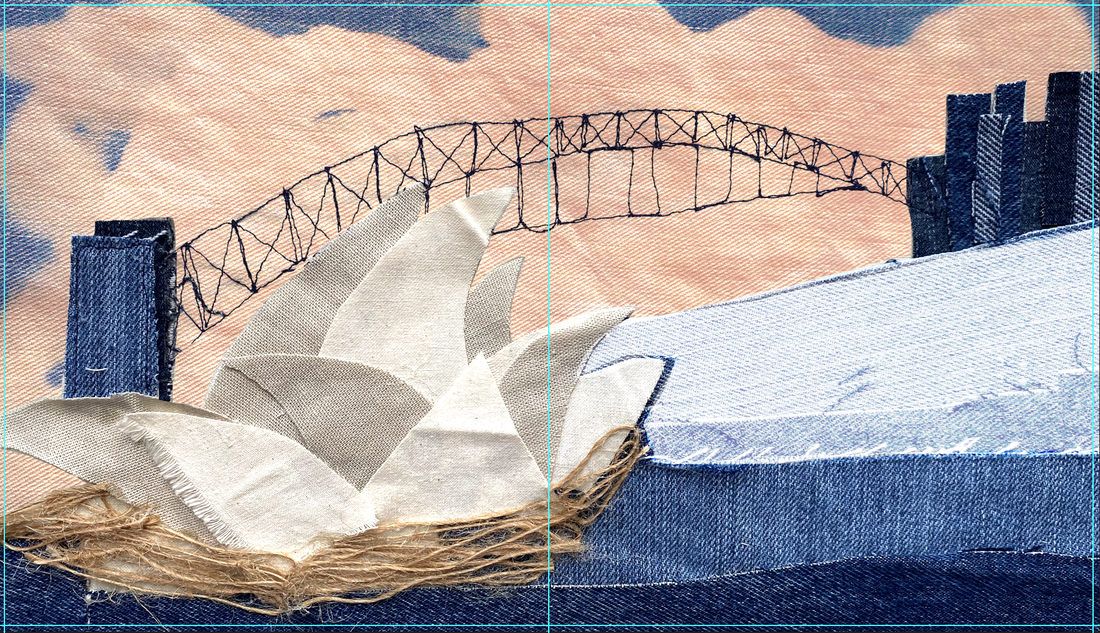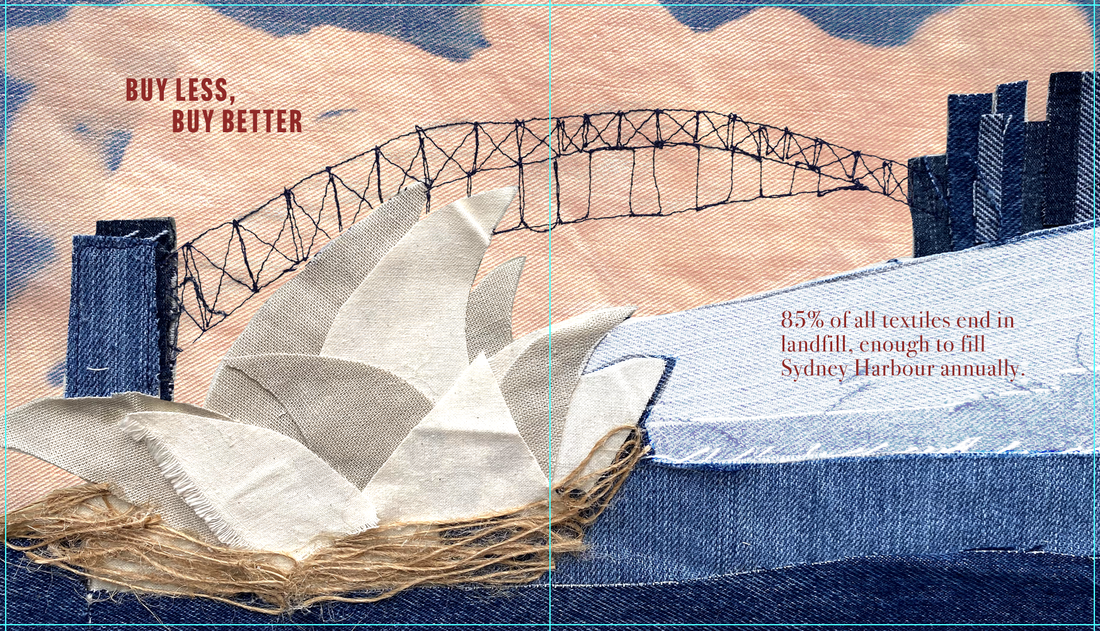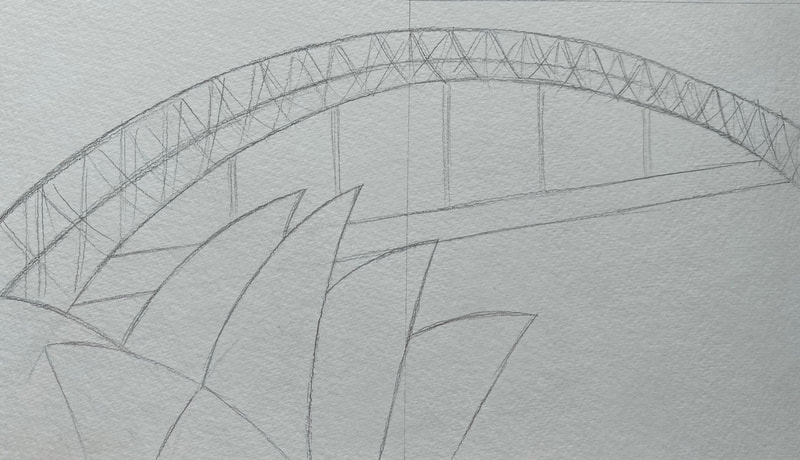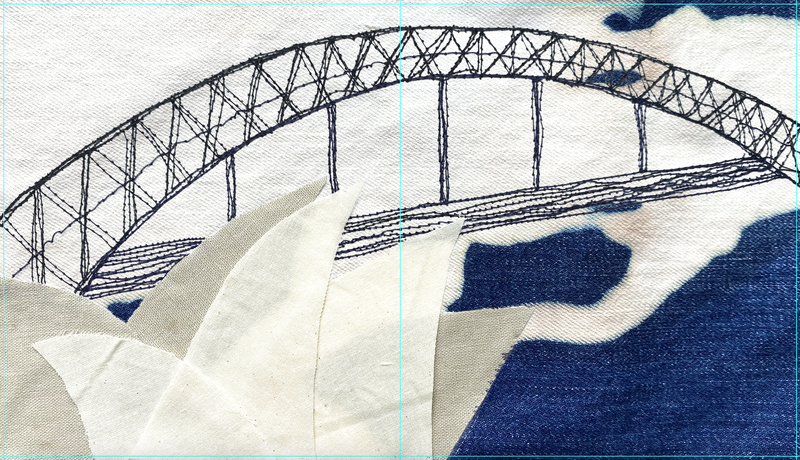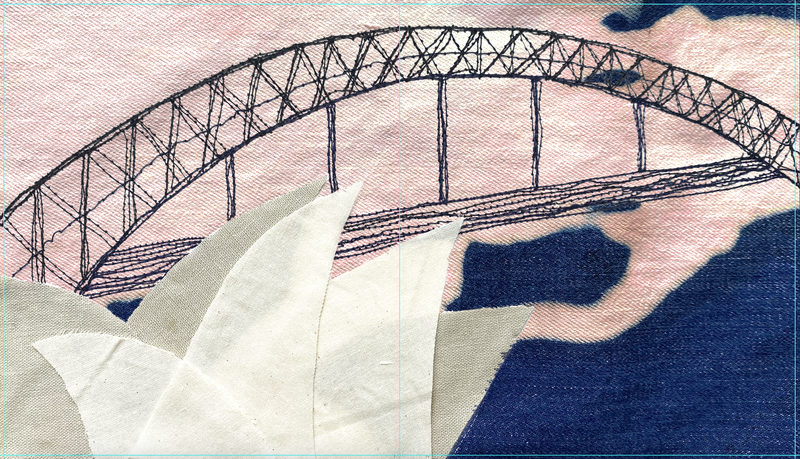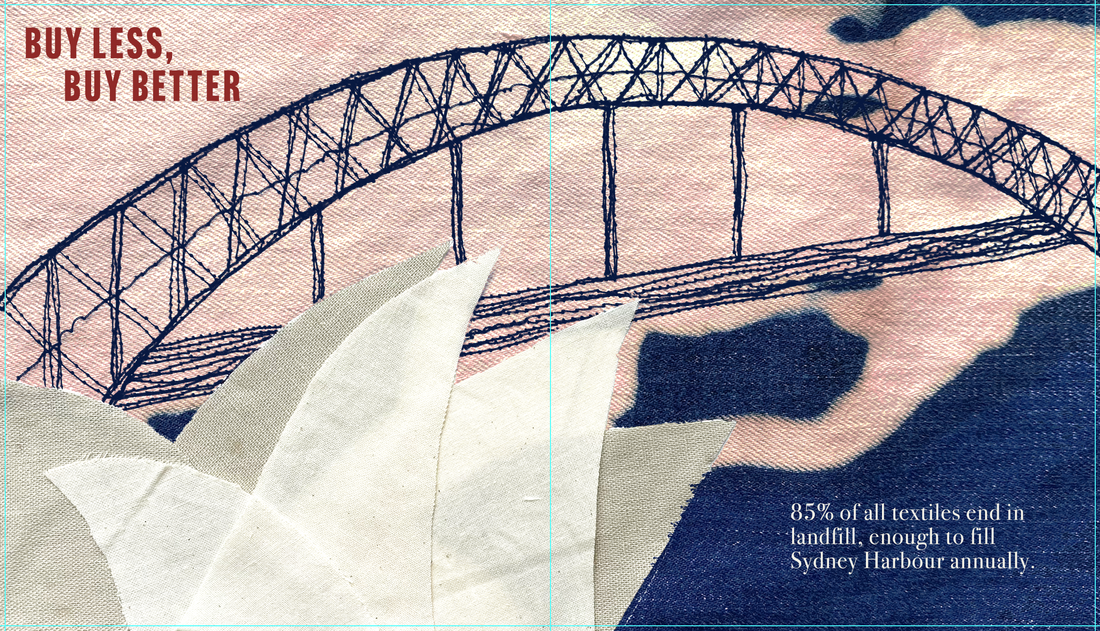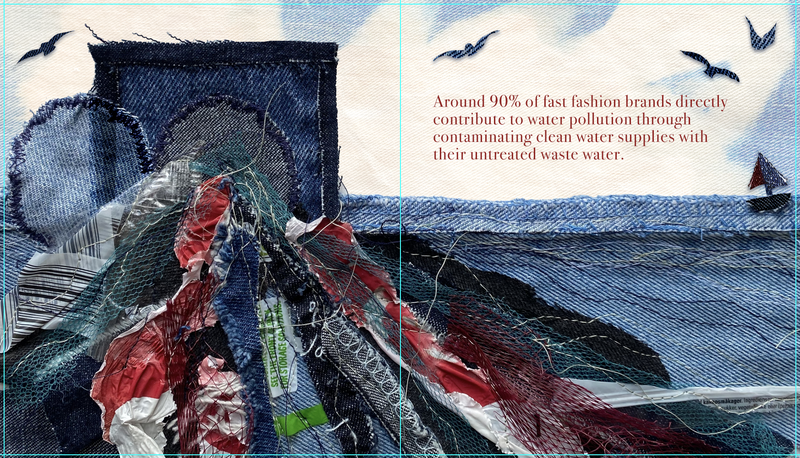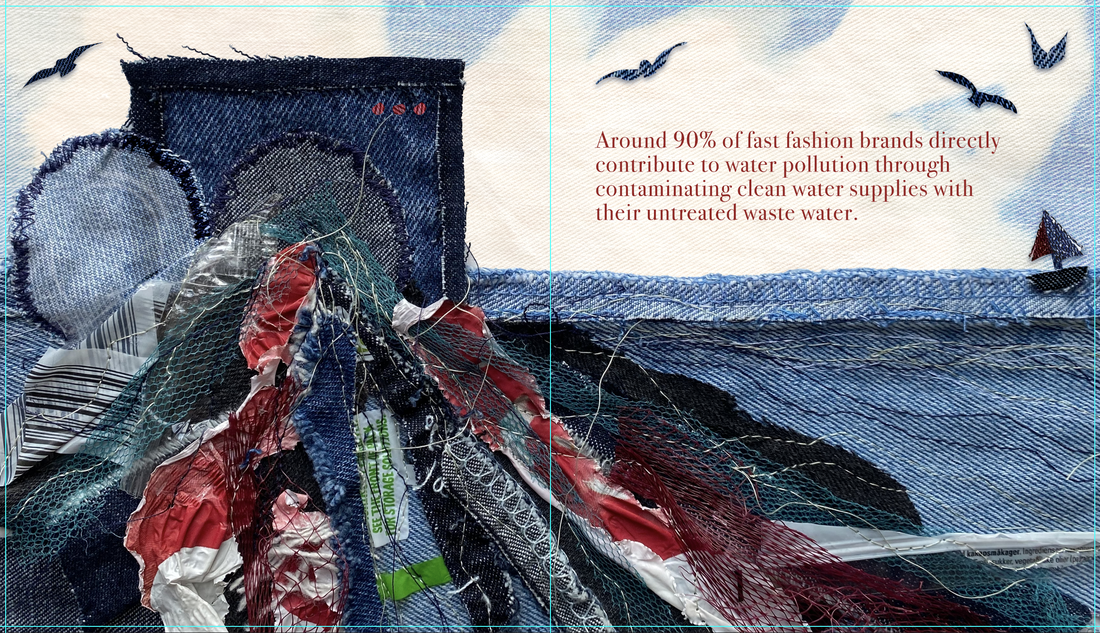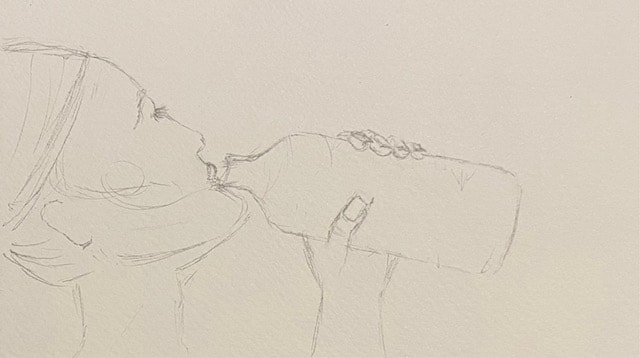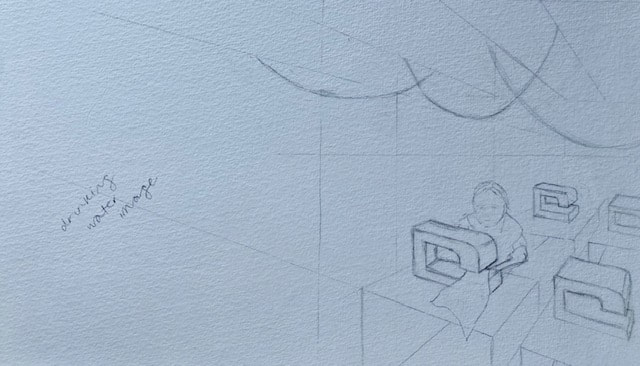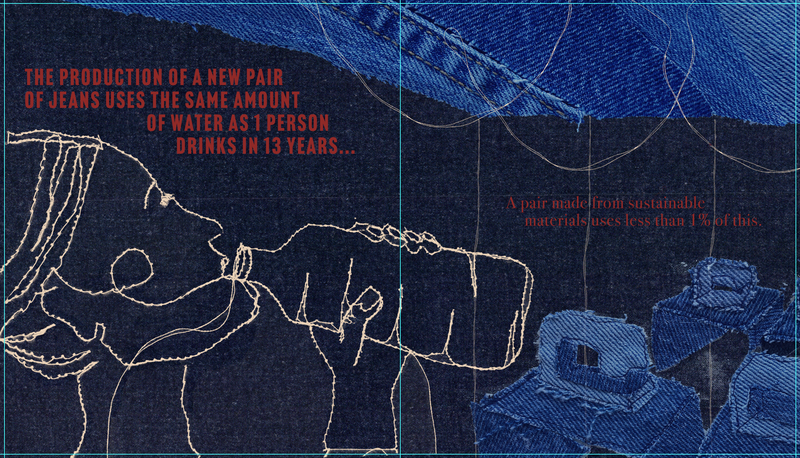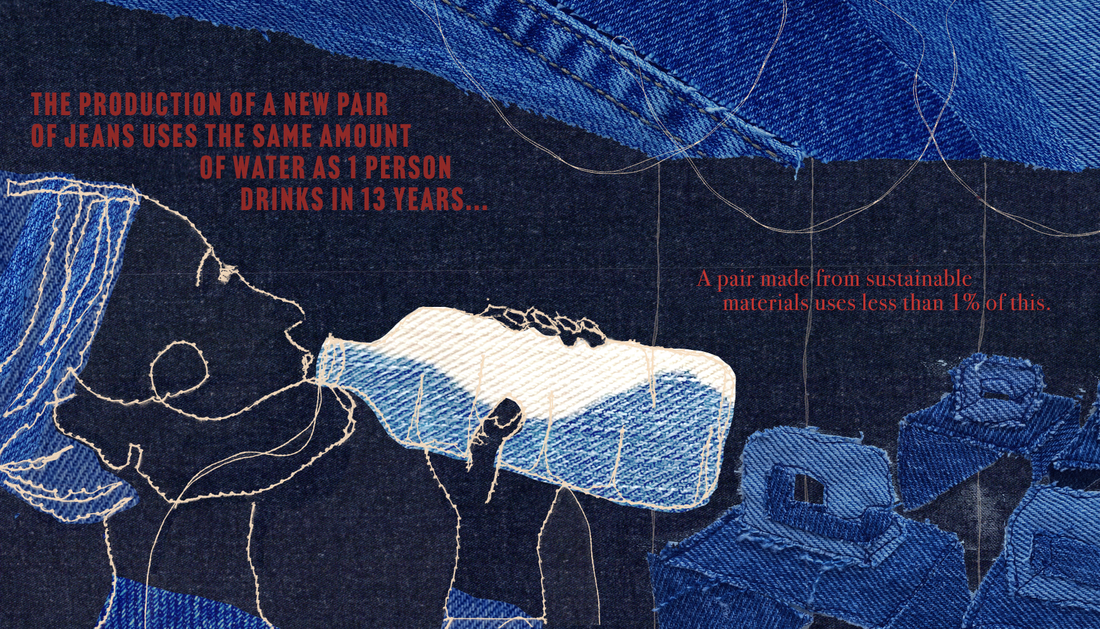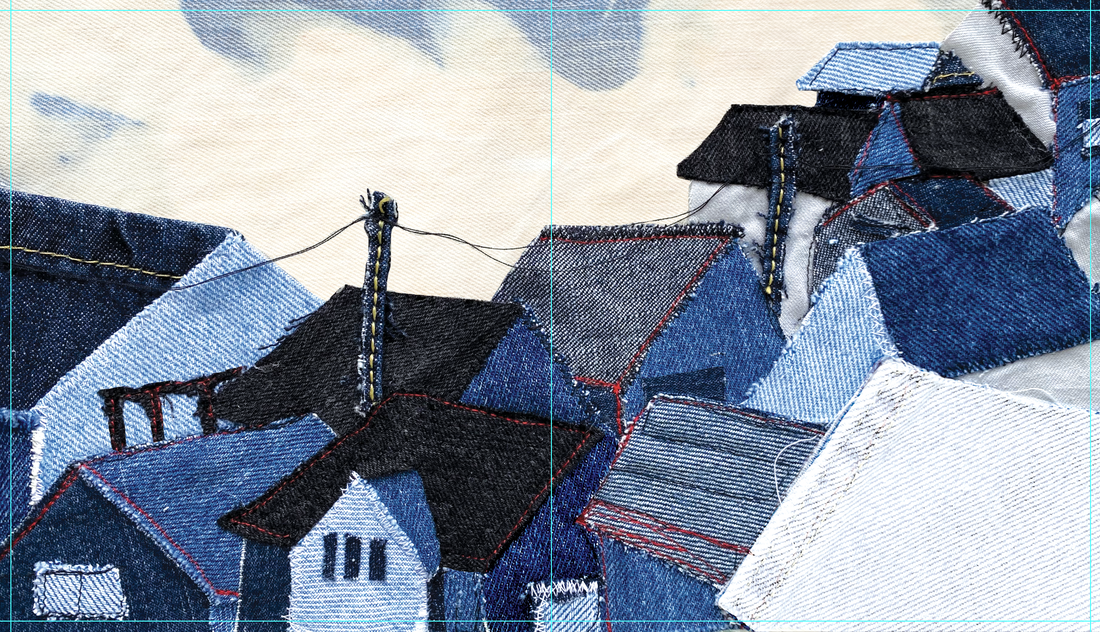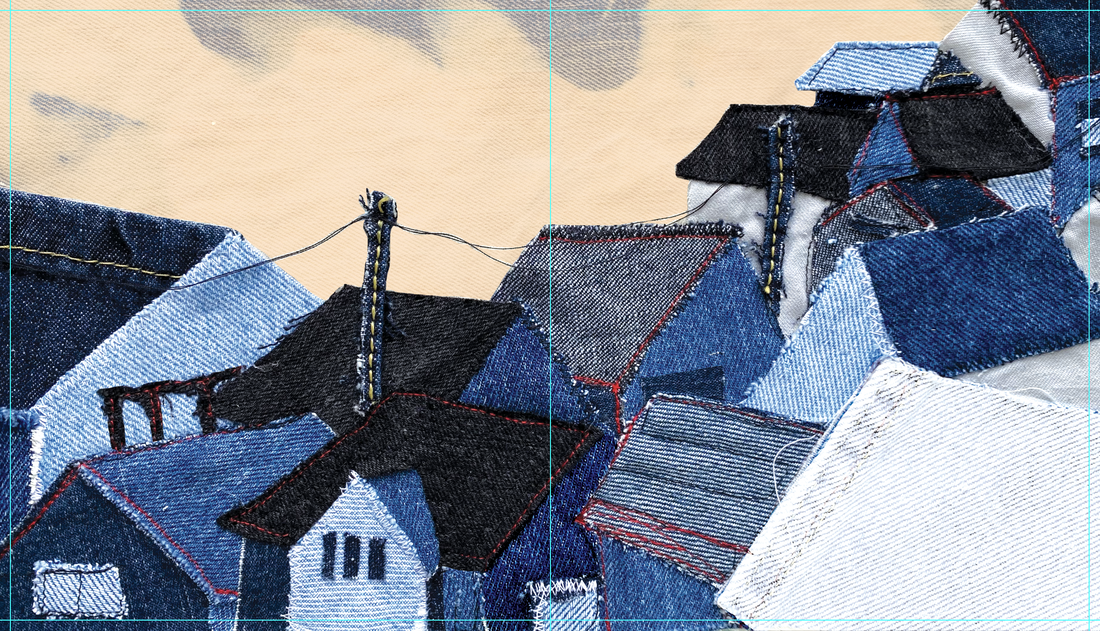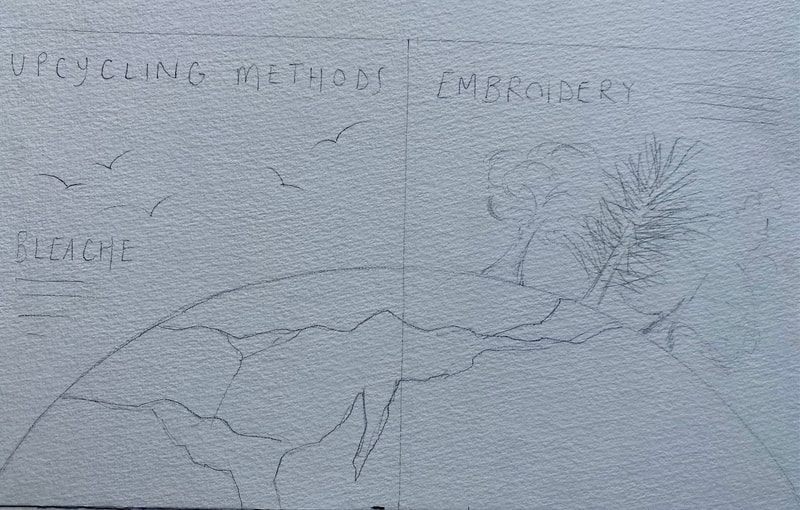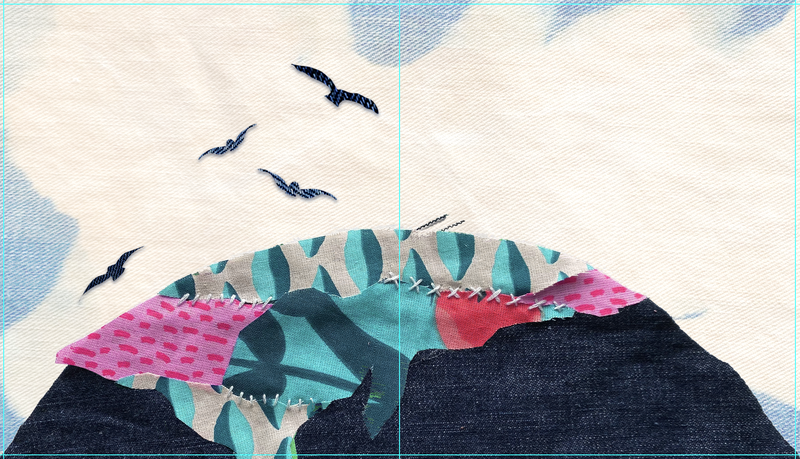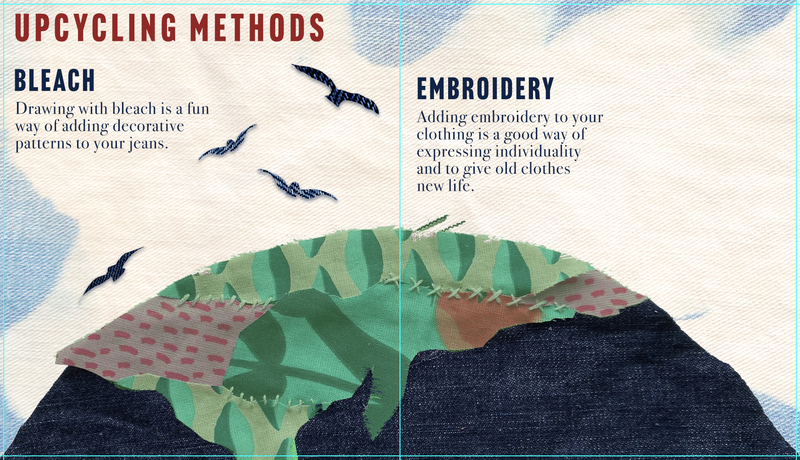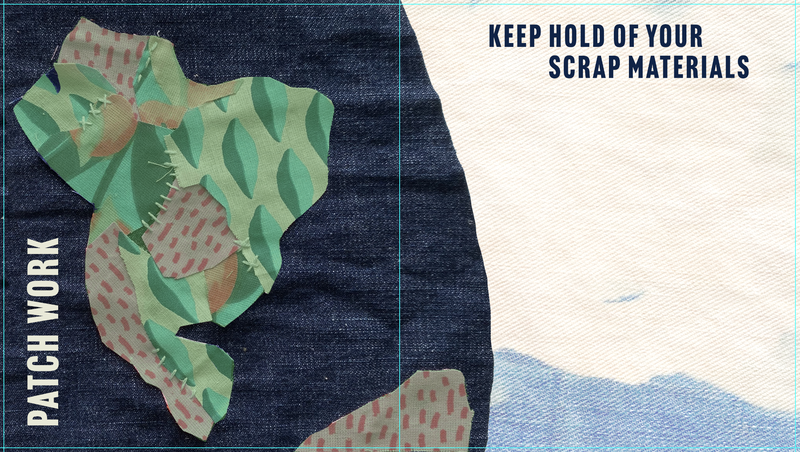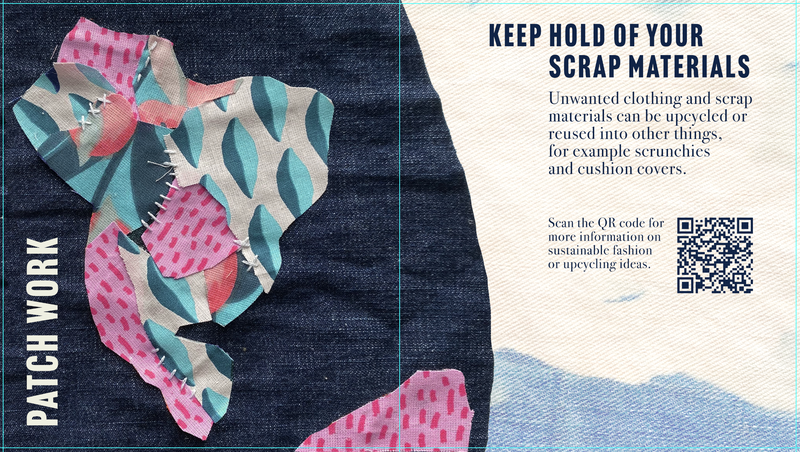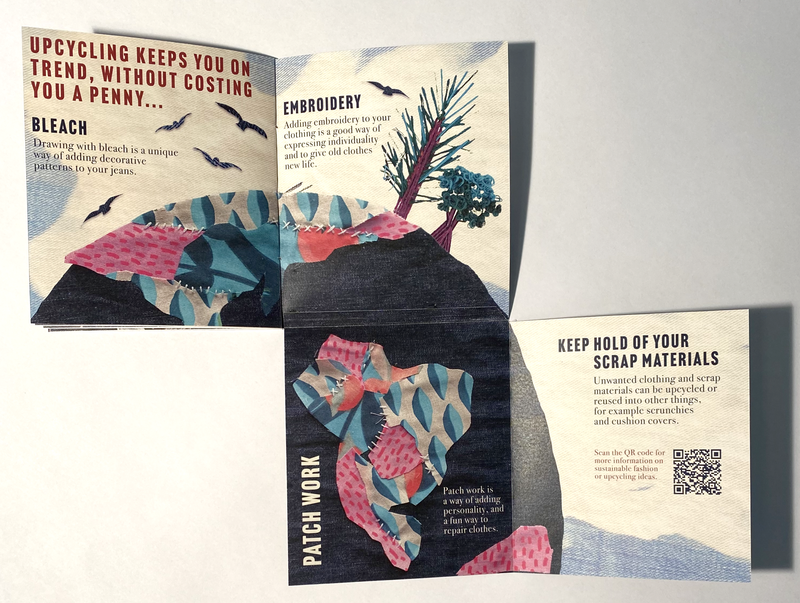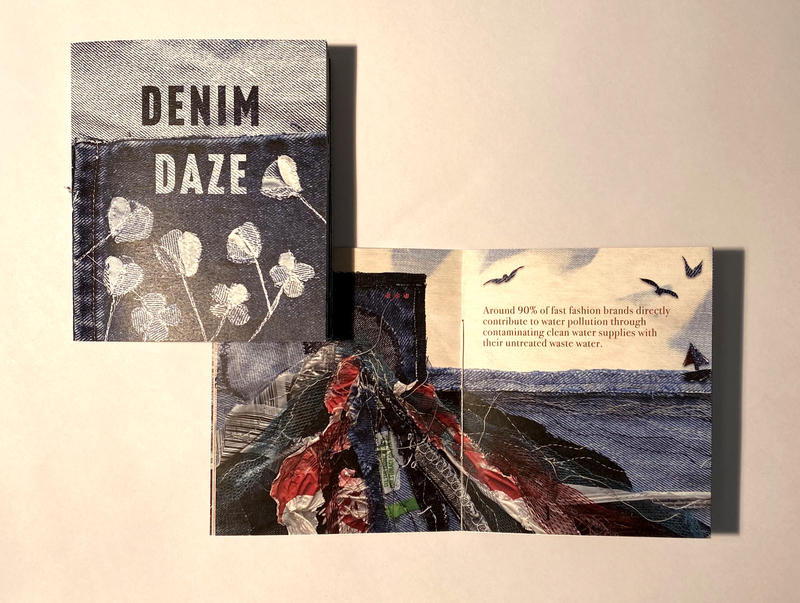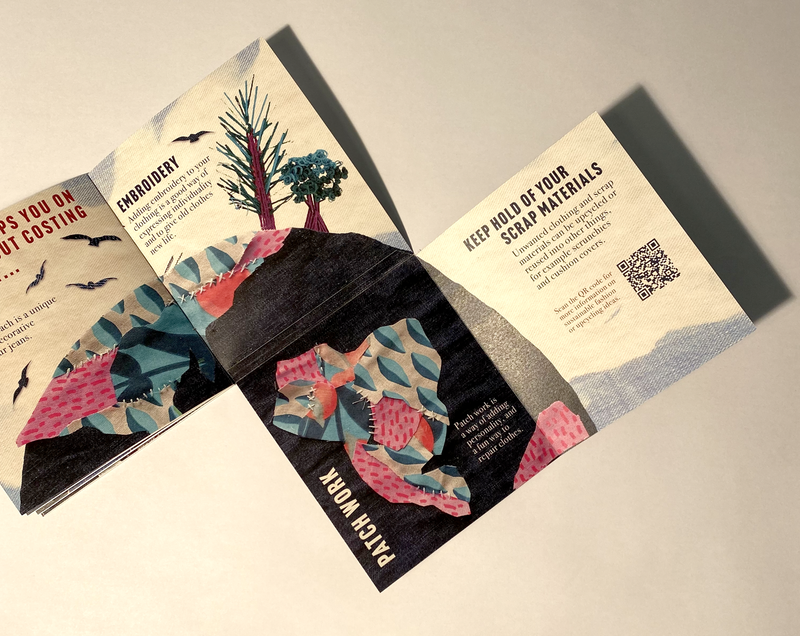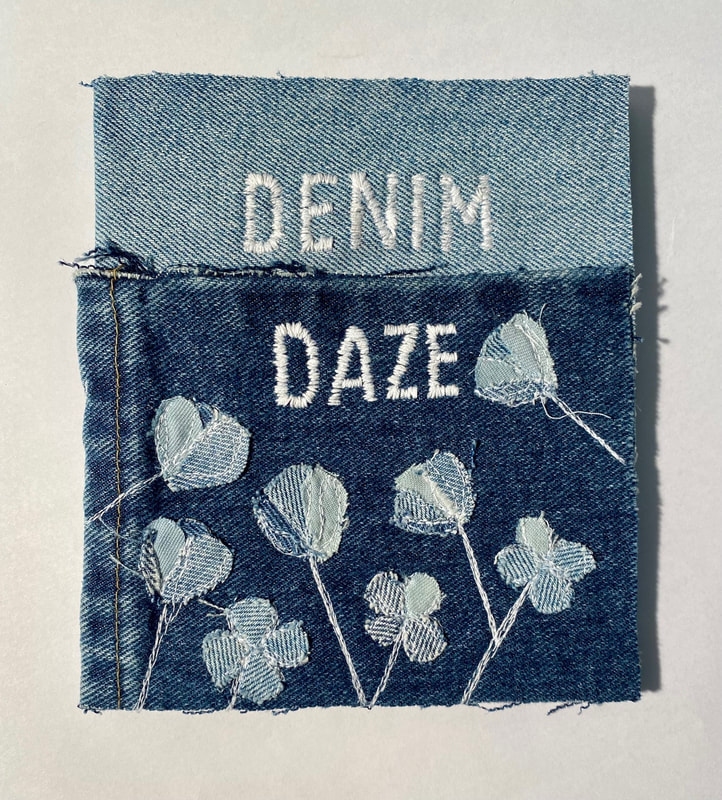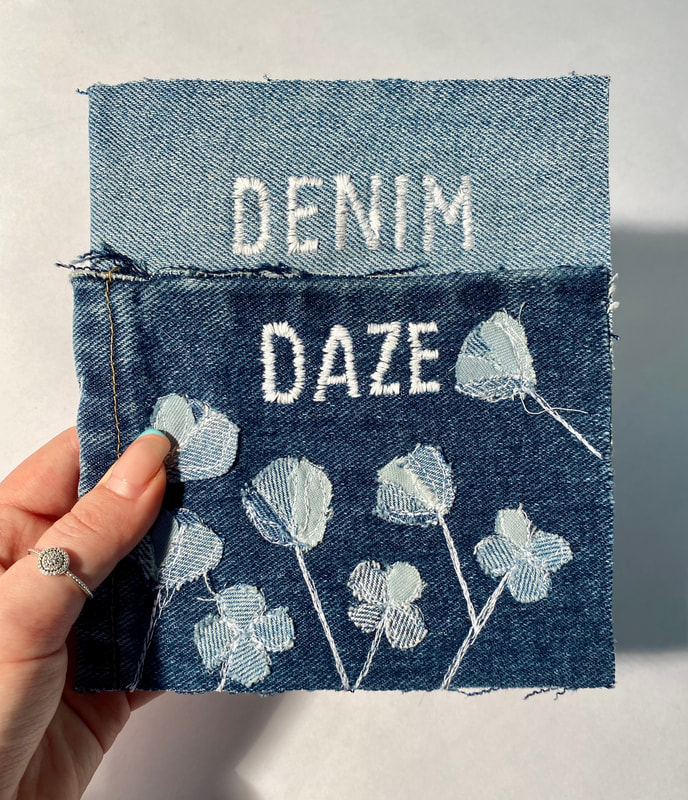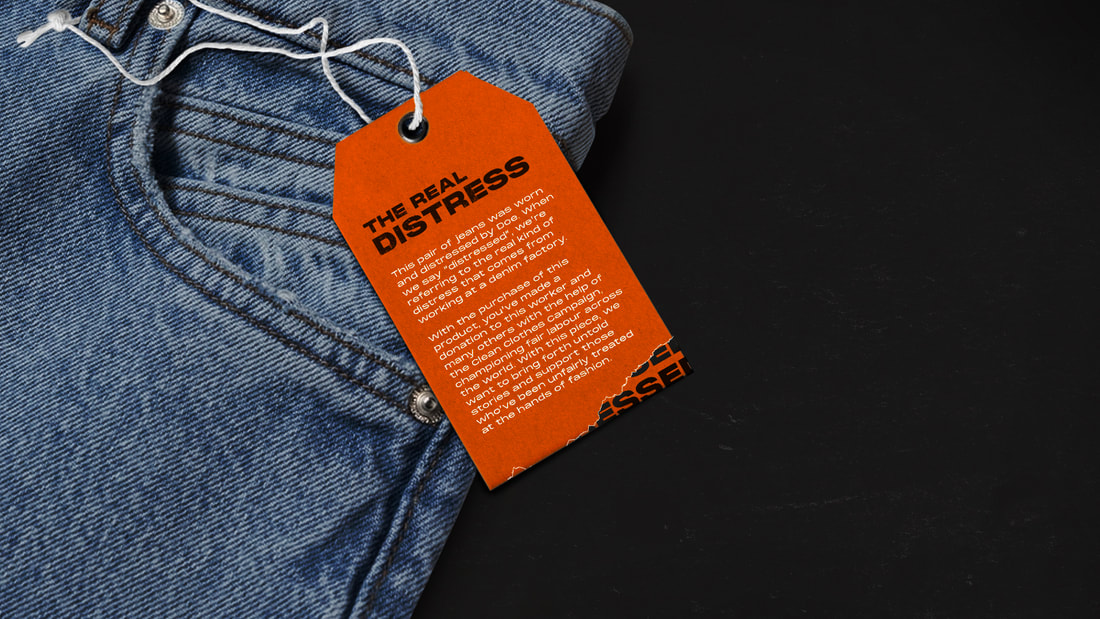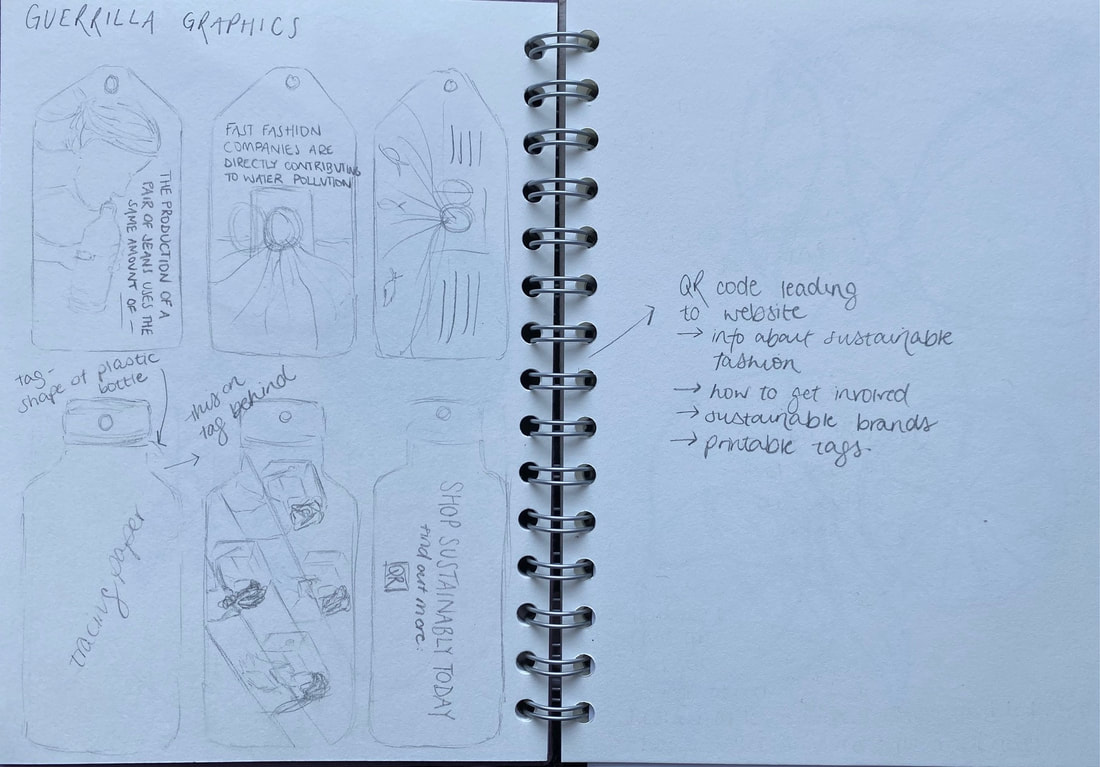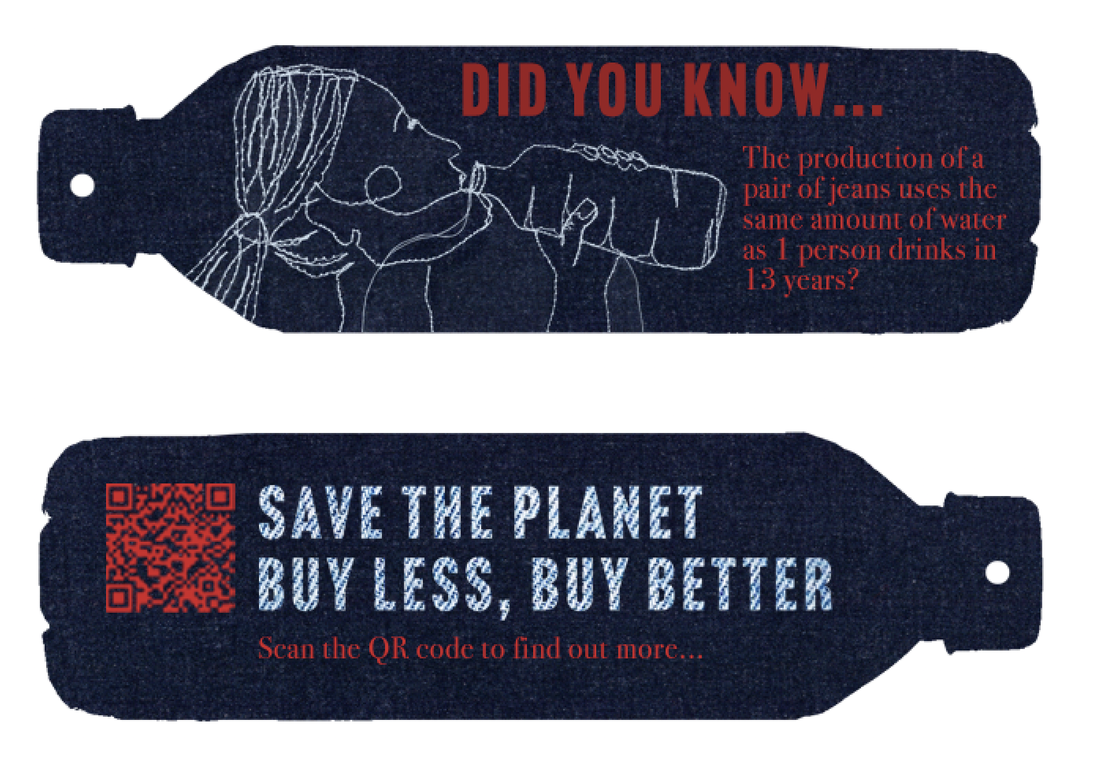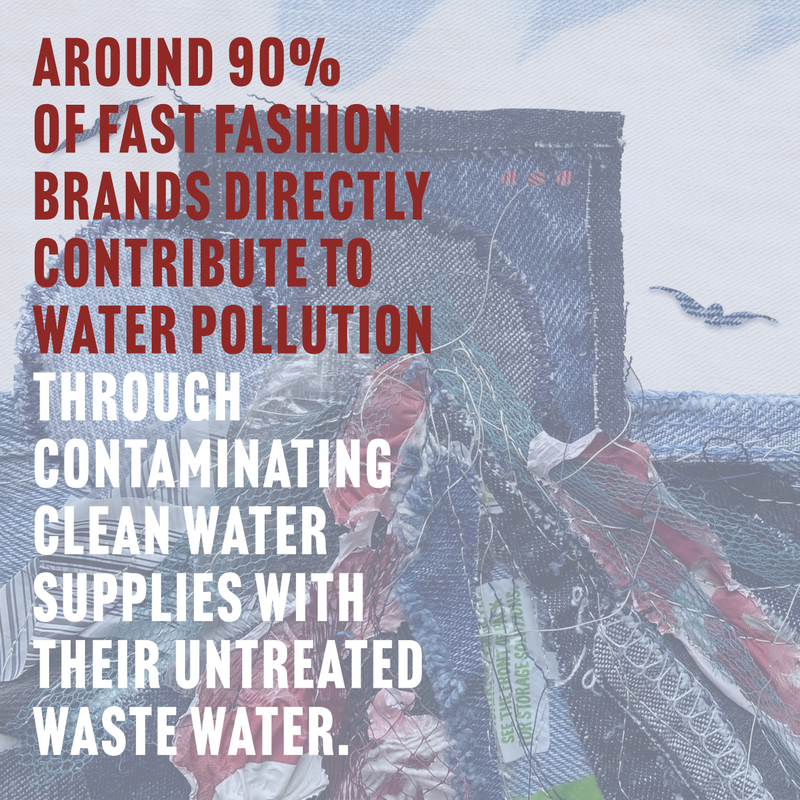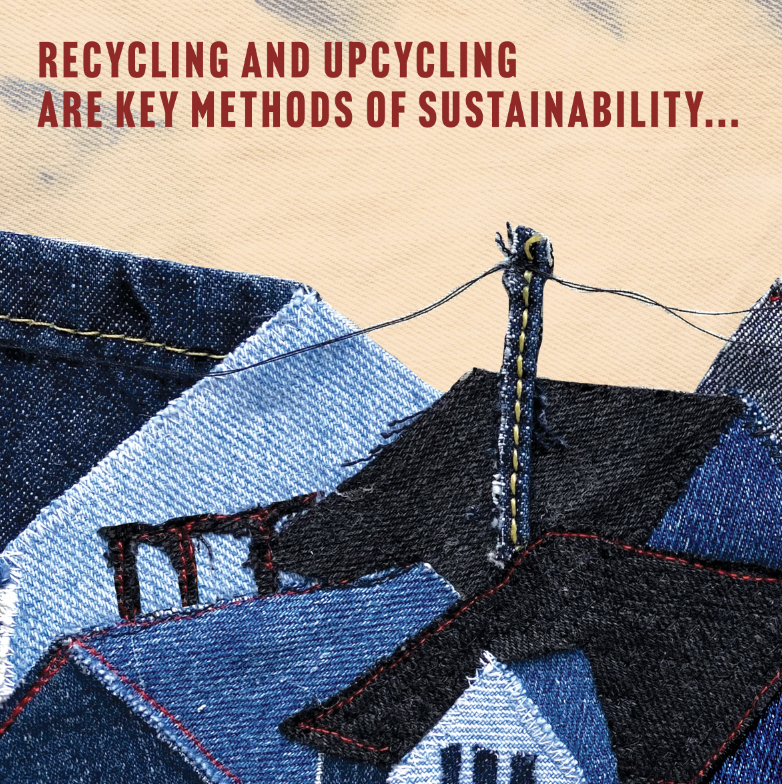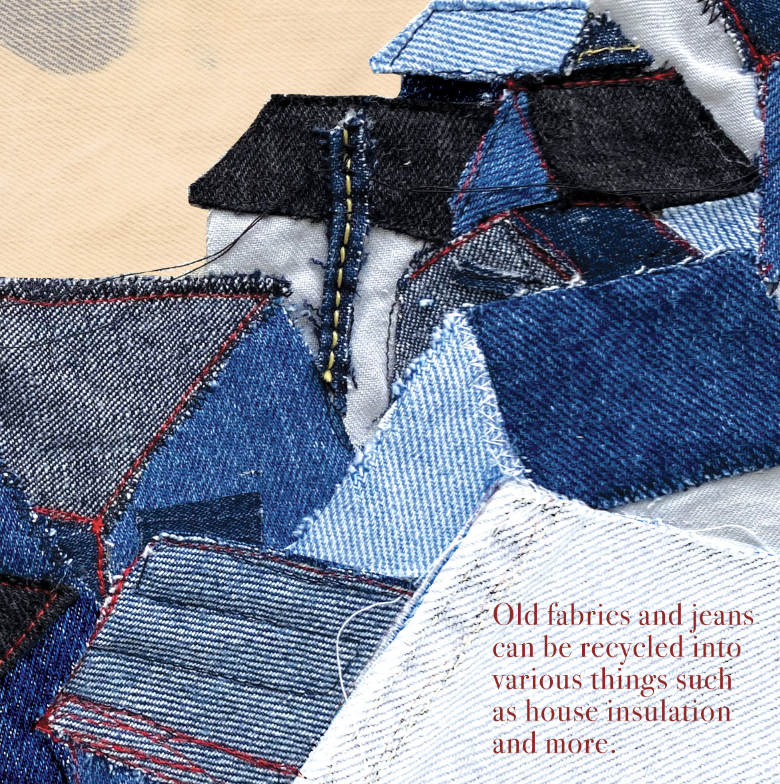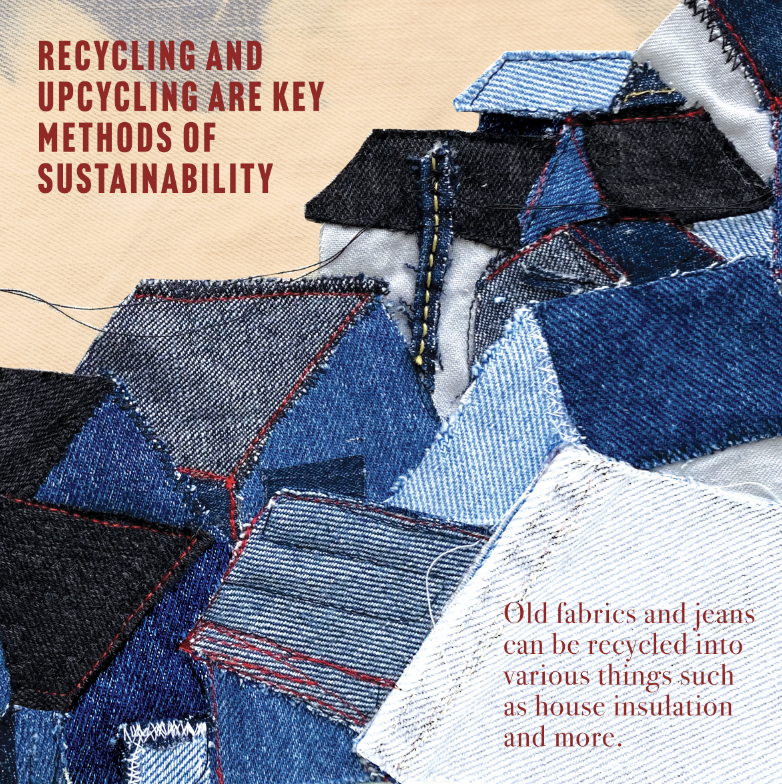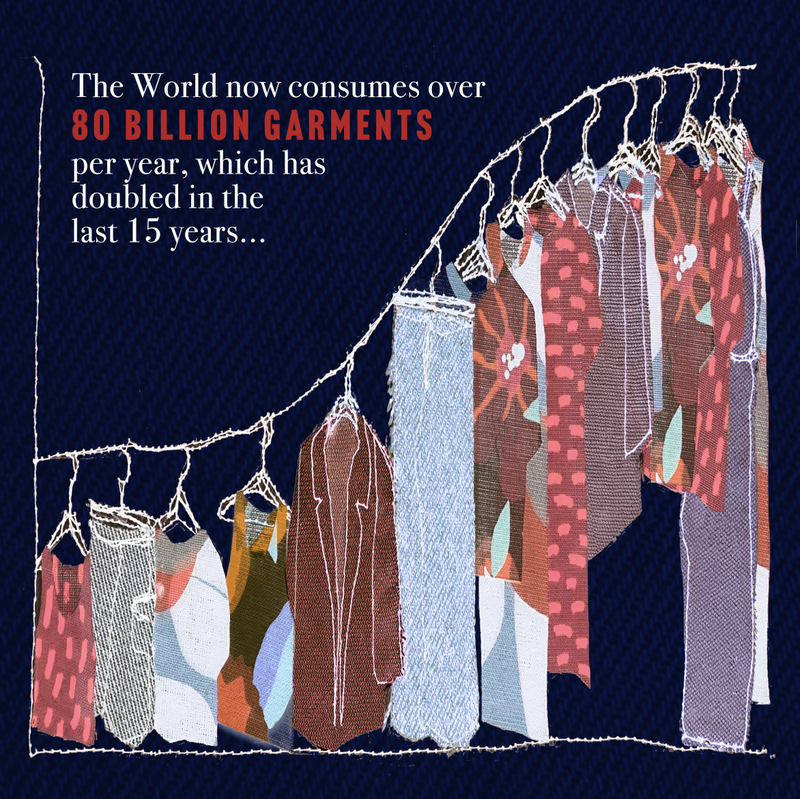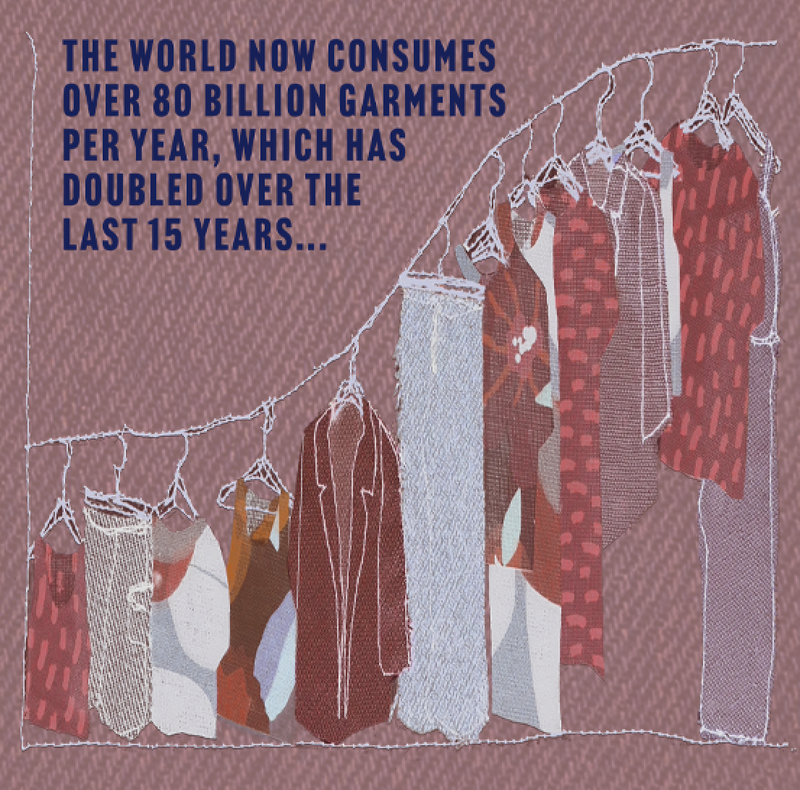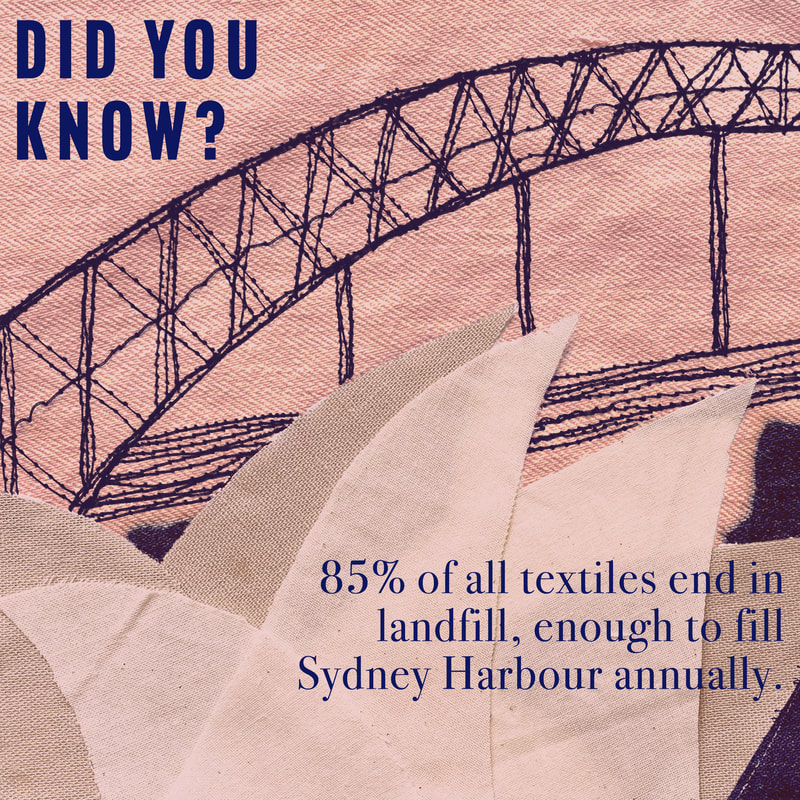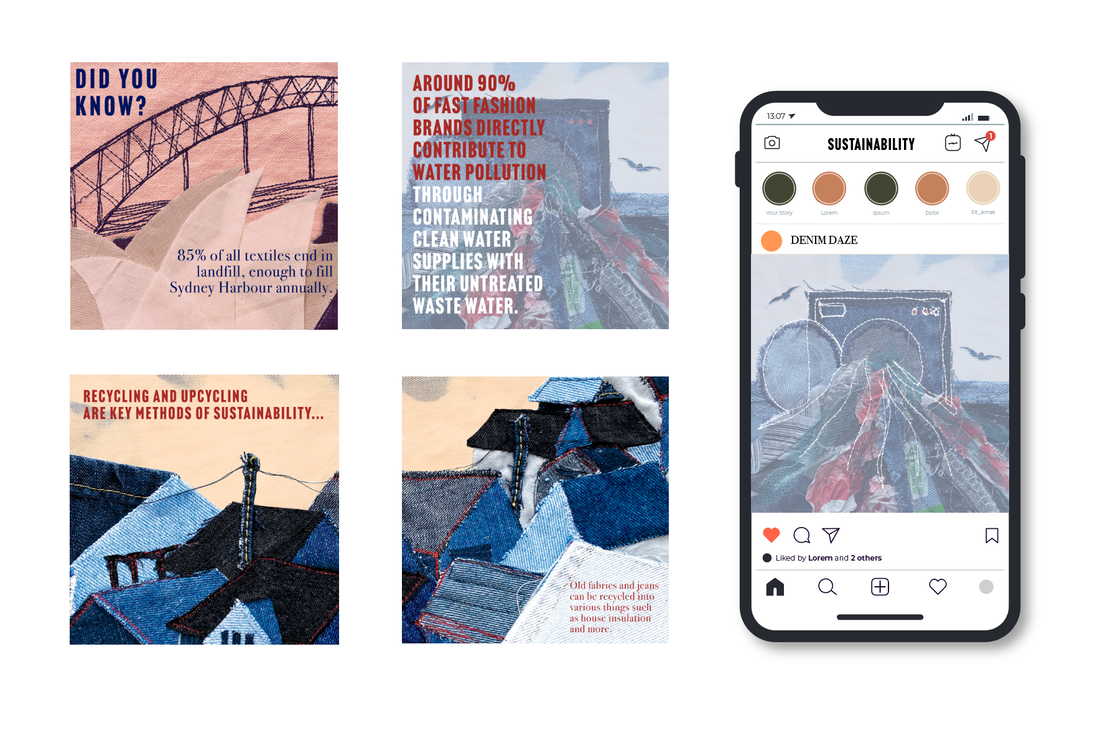SUSTAINABLE FASHION CAMPAIGN
Fast fashion and the 'throw away' society we live in is inevitably destroying the planet. I aim to combat fast fashion through the promotion of sustainability, and identifying how people can get involved in reducing fast fashion. I found lots of articles about sustainable fashion which I will link below as these contain lots of important information about the topic.
WHAT IS FAST FASHION?
FAST FASHION/SUSTAINABILITY ARTICLES:
|
MILLICAN BAGS:
Dwayne had mentioned to me this company based in the Lake District whose focus is on sustainably producing bags of great quality. They also offer repair services to ensure bags are made to last, promoting the idea of 'buy less, buy better'. I will attach their website and their sustainability journey is included. Dwayne also had some copies of some magazine/newsletters which involved journeys of explorers who use their bags. They are really interesting and include lots of exciting visual imagery, I'll attach some photos. |
|
|
After reading about the environmental impact on textiles, and different items of fast fashion - it became evident that denim is the biggest issue in the world of sustainability. Making a new pair of jeans uses approx 1500 gallons of water to produce, which could be reduced to around 10 gallons using sustainable materials. Water pollution is also a huge problem linked with the production of jeans - so I thought this would be an interesting element to focus on. The main category this falls under however, is the idea of 'buy less, buy better', which is something our society lacks.
|
E.L.V DENIM:
I came across a brand, E.L.V. Denim, which is a sustainable company who focus on the manufacture of high-end denim products using all second hand denim. They essentially have a huge focus on 'upcycling' fashion - turning unwanted products into new, which is something which would be good to look further into. Their sustainability journey is fascinating which I will link below.
www.instagram.com/elvdenim/?hl=en
https://elvdenim.com/pages/sustainability
I came across a brand, E.L.V. Denim, which is a sustainable company who focus on the manufacture of high-end denim products using all second hand denim. They essentially have a huge focus on 'upcycling' fashion - turning unwanted products into new, which is something which would be good to look further into. Their sustainability journey is fascinating which I will link below.
www.instagram.com/elvdenim/?hl=en
https://elvdenim.com/pages/sustainability
BUY LESS, BUY BETTER | UPCYCLE | RECYCLE
TARGET AUDIENCE RESEARCH:
|
From research it is clear that the target audience for fast fashion clothing companies are Gen Z (if you were born between 1997 – 2012). This makes sense as the majority of consumers range between 18-24 years old, who are generally students with low income. It has been said that they target those who want trendy, short cycle and inexpensive clothing as fashion is a big element involved with socialising which is important at this stage of life's cycle.
|
|
HOW TO MARKET GEN Z?
books.google.co.uk/books?hl=en&lr=&id=kVBLDwAAQBAJ&oi=fnd&pg=PP1&dq=how+to+market+to+gen+z&ots=fbUBBK7eJr&sig=Wk9tCROnpKr9tBSR2p4zno4YBWM&redir_esc=y#v=onepage&q=how%20to%20market%20to%20gen%20z&f=false I found this e-book which covers the best ways to market gen z consumers, which is really useful for me to figure out the best ways to inform 18-24 year olds on the importance of sustainable fashion. I had to think of the most effective methods to communicate with this demographic and I came up with a few ideas: |
An informative zine about the importance of sustainable fashion & ways in which you can get involved - upcycling, recycling, reusing material, repair, buy second hand etc. - could put these in with fast fashion orders
Posters on how to repair/upcycle certain items of clothing, how to re-use material of unwanted clothes etc. - these posters could be included and unfolded within the zine? Or could be separate altogether
Upcycling - ideas/tutorials on how to upcycle unwanted garments, embroider, bleach, patchwork - again this could be in the zine or could create little guides with tutorials
Students - to cover all genders, beer mats which could be used in the university, student union bars etc. - this would steer towards the males within the demographic?
Instagram posts - instagram as a promotional tool, could produce posts to combat fast fashion, could be bought by sustainable brands which they can use on their instagram
Guerrilla graphics - more of a political method of campaign - could make tags that campaigners can use to attach to clothes in fast fashion stores
Posters on how to repair/upcycle certain items of clothing, how to re-use material of unwanted clothes etc. - these posters could be included and unfolded within the zine? Or could be separate altogether
Upcycling - ideas/tutorials on how to upcycle unwanted garments, embroider, bleach, patchwork - again this could be in the zine or could create little guides with tutorials
Students - to cover all genders, beer mats which could be used in the university, student union bars etc. - this would steer towards the males within the demographic?
Instagram posts - instagram as a promotional tool, could produce posts to combat fast fashion, could be bought by sustainable brands which they can use on their instagram
Guerrilla graphics - more of a political method of campaign - could make tags that campaigners can use to attach to clothes in fast fashion stores
THE ANGLE: SAVE THE PLANET | SAVE YOUR MONEY
Following the target market of fashion conscious students often with low income, I thought a good angle to go off would be to highlight how slow fashion saves the planet, and also saves your money - as this is something which would appeal to this market.
Following the target market of fashion conscious students often with low income, I thought a good angle to go off would be to highlight how slow fashion saves the planet, and also saves your money - as this is something which would appeal to this market.
SUSTAINABLE FASHION & TEXTILES - KATE FLETCHER
DENIM:
Denim is the main item of fast fashion which is destroying the planet - main fact which shocked me was the fact that a brand new pair of jeans uses approx 1500 gallons of water to produce, whilst a pair made from recycled materials uses around 10 gallons. Since most of my work is done in textiles, I can use denim as one of the main components in my illustrations which will also be effective since denim is an element which never really goes out of fashion and has been a key part of fashion for decades.
Denim is the main item of fast fashion which is destroying the planet - main fact which shocked me was the fact that a brand new pair of jeans uses approx 1500 gallons of water to produce, whilst a pair made from recycled materials uses around 10 gallons. Since most of my work is done in textiles, I can use denim as one of the main components in my illustrations which will also be effective since denim is an element which never really goes out of fashion and has been a key part of fashion for decades.
ZINES:
Zines are generally self-published works, either produced by a single-person or a small collective. They are usually small, low-budget, DIY projects. Normally they are distributed through informal channels such as by hand, through the maker, or by mail etc. I thought a zine would be an effective way to communicate useful information to this generation, and they could be included in fast fashion orders and/or be available within universities to access the demographic.
Zines are generally self-published works, either produced by a single-person or a small collective. They are usually small, low-budget, DIY projects. Normally they are distributed through informal channels such as by hand, through the maker, or by mail etc. I thought a zine would be an effective way to communicate useful information to this generation, and they could be included in fast fashion orders and/or be available within universities to access the demographic.
|
HOW/WHERE IT WOULD REACH TARGET MARKET:
Companies such as ASOS Marketplace, Depop and Etsy are all huge names which thrive off sustainability, and are constantly recognising and working towards a change around improving the planet. ASOS Marketplace is home to thousands of brands who promote reworked clothing, vintage buys and sustainable small businesses. Depop is a popular platform for young people nowadays for the sale of second hand clothing, and small businesses and Etsy is a common platform for small businesses to sell their products, but also are a company who highlight the need of sustainability. Therefore, I would aim for my zine to be included within their delivery parcels, as this would reach a broad target audience, especially the younger generations. Furthermore, it would spark conversation, which is key in targeting Gen Z consumers as word of mouth was an effective way of marketing that generation. |
|
https://blog.etsy.com/news/2020/expanding-our-sustainability-efforts/
https://marketplace.asos.com/?dp=1
https://time.com/6089003/depop-upcycling-fashion/
https://theconversation.com/depop-sale-fashion-retailers-must-move-faster-on-sustainability-or-they-will-be-replaced-by-gen-z-apps-162198
https://marketplace.asos.com/?dp=1
https://time.com/6089003/depop-upcycling-fashion/
https://theconversation.com/depop-sale-fashion-retailers-must-move-faster-on-sustainability-or-they-will-be-replaced-by-gen-z-apps-162198
WHATCHA MEAN, WHAT'S A ZINE? - MARK TODD & ESTHER PEARL WATSON
|
|
|
|
|
PLANNING THE ZINE:
Through creating my own zine around a sustainable fashion campaign, I had to think about what would be most important to include within to produce a sort of clearer narrative. I made lots of notes which I will link below, varying from facts about sustainable fashion, ideas for upcycling/revamping clothes, repurposing clothing, mainly looking at how people can get involved. |
Once I've worked out everything I want to include then I can work out how many pages I want to include in the zine etc and start looking at formats etc. Might be worth exploring having guides/tutorials on upcycling separate to the zine itself?
These are the main things I will include in the zine, in this order. I haven't yet decided whether I want to include upcycling and recycling ideas within the zine, whether that be fold out pages or a fold out poster maybe, or whether to produce separate mini zines/tutorials. Once I have mocked up some zines with the appropriate number of pages etc I will figure out which is the most viable. Also I need to ensure my pages are a multiple of 4 due to printing purposes. The fold out page will need to be printed separately and inserted as this would be complicated to do within indesign.
ZINE FORMATS/PRINTING THE ZINE:
I plan to print all copies of the zine in-house since zines are generally DIY projects, and this will most likely be the cheapest way. I will use recycled paper too, since the project is about sustainability. Regarding the scale of my zine, I don't want it to be a standard A5. I like a more square scale but I think somewhere between square and A5 would be a good size for the zine, so a short A5 is what I'll go for I think - good size to hold and read through, but also a good size to include in fashion packages. I tried out various options in terms of folding out. I was looking at incorporating a poster too, some of the zines could fold out and then on the reverse is a poster too which would be effective. I looked at an 8 page zine but I think what I want to include would look better as double page spreads rather than single pages as I think it would flow better. I also looked at including mini zines or fold outs within the last section which would be the upcycling section as I want to find an effective way of displaying the different ideas. Also, if I opted for a simple binded zine, the double page spreads can double for posters too so this would also work. I will add the templates I made below. For the binded zine I would probably stitch the bind as this adds to the textiles elements.
I plan to print all copies of the zine in-house since zines are generally DIY projects, and this will most likely be the cheapest way. I will use recycled paper too, since the project is about sustainability. Regarding the scale of my zine, I don't want it to be a standard A5. I like a more square scale but I think somewhere between square and A5 would be a good size for the zine, so a short A5 is what I'll go for I think - good size to hold and read through, but also a good size to include in fashion packages. I tried out various options in terms of folding out. I was looking at incorporating a poster too, some of the zines could fold out and then on the reverse is a poster too which would be effective. I looked at an 8 page zine but I think what I want to include would look better as double page spreads rather than single pages as I think it would flow better. I also looked at including mini zines or fold outs within the last section which would be the upcycling section as I want to find an effective way of displaying the different ideas. Also, if I opted for a simple binded zine, the double page spreads can double for posters too so this would also work. I will add the templates I made below. For the binded zine I would probably stitch the bind as this adds to the textiles elements.
SOURCING MATERIAL:
|
For producing my illustrations, I wanted to source some scrap materials, preferably denim as I want to use this within my work with it being the element of fast fashion which has the biggest impact on the planet (sustainably speaking). Through my research of sustainable brands, I got in touch with E.L.V Denim who are a sustainable denim company, and asked if they had any denim scraps they would be willing to donate. They were more than happy to post me as much as I needed so they sent me lots of scraps, of a variety of different shades and I plan to use this throughout my illustrations to keep a cohesive visual language.
|
|
SAMPLE PIECE USING DENIM:
I thought it would be useful to create a textile piece using denim just to get a feel for the kind of illustrations I plan to produce, so I just created an image of tulips using scraps of denim. I also experimented with bleach to see how it looked but it's useful to see the before and after as I can see which I prefer. I don't think the highlights with bleach work that well I think that's better with just lighter shades of denim. However I think the bleached denim would be a good effect for a sky in my illustrations, or a background, as it helps to bring things forward. I also stitched round everything in the last image to help keep everything down and you can add more definition of shapes . |
THUMBNAILS:
Here are some of my thumbnails so far. I am working mainly with different shades of blue for denim, but also trying to figure out interesting compositions and visuals for the text I plan to include. I think some definitely work better than others, and I think working conceptually might work better and be more communicative for this subject.
Here are some of my thumbnails so far. I am working mainly with different shades of blue for denim, but also trying to figure out interesting compositions and visuals for the text I plan to include. I think some definitely work better than others, and I think working conceptually might work better and be more communicative for this subject.
RESEARCH IMAGES:
For a lot of my visuals, I'm trying to link a lot back to denim, how it's made and where it comes from, so these images have influenced lots of my ideas. I've also included here some inspiration for a front cover as I want it to have a bit of a fashion magazine element to it considering it surrounds sustainable fashion.
For a lot of my visuals, I'm trying to link a lot back to denim, how it's made and where it comes from, so these images have influenced lots of my ideas. I've also included here some inspiration for a front cover as I want it to have a bit of a fashion magazine element to it considering it surrounds sustainable fashion.
CONCEPT PAGE:
I thought it would be useful just to get stuck in and produce a spread with an idea I was happy with, and then I can play with text and see how to go about the other pages. After first scanning it in, it was very blue, and Tony suggested maybe adding in some warmer tones just to ensure I'm communicating along the right lines which helped a lot, and I did this with Photoshop. We also spoke about Typography so this is something I will need to have a play with as I was thinking for titles I could cut letters out of fabric or use letters off printed t shirts etc, and this is also a way I can incorporate more colours to add a bit of pop. Regarding type options, I probably won't look at sans serif fonts as these are masculine, quite casual and uniform, whereas serif fonts are more feminine and fashion orientated whilst also remaining very readable. Might be interesting to have a serif font for titles etc and a sans serif font for body text. I'll print versions out too so I can check the text is readable against their backgrounds etc. Overall though I thought this page looked good so far, with an eye catching composition etc.
I thought it would be useful just to get stuck in and produce a spread with an idea I was happy with, and then I can play with text and see how to go about the other pages. After first scanning it in, it was very blue, and Tony suggested maybe adding in some warmer tones just to ensure I'm communicating along the right lines which helped a lot, and I did this with Photoshop. We also spoke about Typography so this is something I will need to have a play with as I was thinking for titles I could cut letters out of fabric or use letters off printed t shirts etc, and this is also a way I can incorporate more colours to add a bit of pop. Regarding type options, I probably won't look at sans serif fonts as these are masculine, quite casual and uniform, whereas serif fonts are more feminine and fashion orientated whilst also remaining very readable. Might be interesting to have a serif font for titles etc and a sans serif font for body text. I'll print versions out too so I can check the text is readable against their backgrounds etc. Overall though I thought this page looked good so far, with an eye catching composition etc.
TYPOGRAPHY EXPERIMENTS:
Regarding typography I began with a vision of a fashion orientated font, but I didn't feel like it was really working so I opted towards a sans serif font for the bold text and titles and then a serif font for the body text which I think began to work better.
Regarding typography I began with a vision of a fashion orientated font, but I didn't feel like it was really working so I opted towards a sans serif font for the bold text and titles and then a serif font for the body text which I think began to work better.
COVER: DENIM DAZE
I experimented here with adding in some warmer tones to tie this cover into some of the other pages included in the zine, but I'm not sure whether I actually prefer the denim cover that isn't edited.
I experimented here with adding in some warmer tones to tie this cover into some of the other pages included in the zine, but I'm not sure whether I actually prefer the denim cover that isn't edited.
PAGE 1: Fast fashion is inevitably destroying the planet. Help save the planet by saving your money...
I tried out a different background on this page, but I think the shape the bleach makes in the middle image is a little too harsh and also gives off a warmer vibe, which portrays the wrong message really as this page involves quite a negative message. I also had a quick look at seeing what it looked like with the symbol on the opposite page but I decided against it.
I tried out a different background on this page, but I think the shape the bleach makes in the middle image is a little too harsh and also gives off a warmer vibe, which portrays the wrong message really as this page involves quite a negative message. I also had a quick look at seeing what it looked like with the symbol on the opposite page but I decided against it.
PAGE 2: The World now consumes over 80 billion garments per year, which has doubled over the last 15 years.
I experimented with the typography here to try and ensure the space is being used effectively, and to make the type more interesting and allow hierarchy for the big figures - emphasises to the reader.
I experimented with the typography here to try and ensure the space is being used effectively, and to make the type more interesting and allow hierarchy for the big figures - emphasises to the reader.
PAGE 3: Buy less, buy better... 85% of all textiles end in landfill, enough to fill Sydney Harbour annually.
I wasn't sure on this spread after developing it, I liked the initial composition of the spread but I felt it wasn't dynamic enough, so I re-worked this one which I am much happier with. I do need to do test prints however though to ensure all the text is legible against the denim backgrounds.
PAGE 4: Around 90% of fast fashion brands directly contribute to water pollution through contaminating clean water supplies with their untreated waste water.
I figured out here that the illustration wasn't quite being read as a washing machine, it could be read as just a pipe, so I edited the washing machine to try and give a glass effect to the door and added buttons to make it more readable.
I figured out here that the illustration wasn't quite being read as a washing machine, it could be read as just a pipe, so I edited the washing machine to try and give a glass effect to the door and added buttons to make it more readable.
PAGE 5:
The production of a new pair of jeans uses the same amount of water as 1 person drinks in 13 years. A pair made from sustainable materials uses less than 1% of this.
I experimented this spread with a bleached background but I didn't think it worked as well - and I wanted it to be dark to portray the idea of a sweat shop further.
The production of a new pair of jeans uses the same amount of water as 1 person drinks in 13 years. A pair made from sustainable materials uses less than 1% of this.
I experimented this spread with a bleached background but I didn't think it worked as well - and I wanted it to be dark to portray the idea of a sweat shop further.
PAGE 6: Recycling and upcycling are key methods of sustainability... Old fabrics and jeans can be recycled into various things such as house insulation and more.
I think the original piece has quite a cool feel to it, so the warm background really brings the piece more to life and has a positive feel, which is the stage we're at in the zine - looking at how to make a positive change.
I think the original piece has quite a cool feel to it, so the warm background really brings the piece more to life and has a positive feel, which is the stage we're at in the zine - looking at how to make a positive change.
PAGE 7: Upcycling can keep you up to date with the latest trends, without costing you a penny... (include bleach and embroidery on these pages)
I originally had the idea of making the patch section green using photoshop, but then I really liked how it looked with the bright colours - and I think it's more fun for it to be bright and colourful, giving the page a positive mood which is the desired effect as it is the upcycling page.
I originally had the idea of making the patch section green using photoshop, but then I really liked how it looked with the bright colours - and I think it's more fun for it to be bright and colourful, giving the page a positive mood which is the desired effect as it is the upcycling page.
PAGE 8 FOLD OUT PAGE: following on from previous page - include patchwork and using scrap material for cushions & scrunchies on this page...
After speaking to Helen about printing the fold out page - she advised it would be easier to print this fold out page separately and stick in as I wouldn't be able to print this to a size where it could all be on one page. I would just add a tab to the top, and have it the same dark denim so it is seamless. Again, I looked at the page here with the green layer, but I really like how colourful it is without. I have made this page smaller in length to allow it to fit inside the zine easily when folded, but I have allowed extra room at the top to add on a tab for attaching it to the other page.
After speaking to Helen about printing the fold out page - she advised it would be easier to print this fold out page separately and stick in as I wouldn't be able to print this to a size where it could all be on one page. I would just add a tab to the top, and have it the same dark denim so it is seamless. Again, I looked at the page here with the green layer, but I really like how colourful it is without. I have made this page smaller in length to allow it to fit inside the zine easily when folded, but I have allowed extra room at the top to add on a tab for attaching it to the other page.
TEST PRINTS:
|
I previously printed an illustration on various types of paper, and opted for cupcycled cartridge paper as this provided a more tactile feel, suitable for my textile illustrations. It's also recyclable which is perfect for my sustainable project and seems most appropriate. I printed out the illustrations I had so far on cupcycled cartridge paper, mainly to check the typography, ensure it is readable against the various denim textures. It was also helpful to see if any alterations are needed in terms of colours, whether I need to adjust some tones etc if some of the shades of blue didn't contrast enough etc.
|
FINAL ZINE:
ARTIST'S EDITION:
Will be on show at exhibition/degree show!
Will be on show at exhibition/degree show!
GUERILLA GRAPHICS:
Guerrilla graphics is essentially a movement in which people can express their views and opinions to a large audience in an anonymous way - generally in public places. They are often effective ways of advertisement or promoting views, and are ways of sparking conversation amongst the public. Examples of guerrilla graphics include street art, interactive pop ups either indoor or outdoor (examples within the websites below), general unconventional methods to evoke surprise, wonder and shock.
One method which would work for my campaign would be to produce clothing tags, promoting the idea of slow fashion, steering away from fast fashion. These could then be attached to garments within fast fashion stores by campaigners, or could even be used by sustainable brands within their packaging. I found an example of sending out messages through clothing tags below which was interesting to look at.
|
THUMBNAILS:
For the tag, I knew I needed it to include a communicative visual to engage attention, but then I thought to add more purpose to this method of campaign it would be useful to include a QR code which would direct interest to a website which could include more information, why sustainable fashion is important, links to good sustainable clothing brands, how you can be more sustainable and how to get involved in the campaign. |
DISTRIBUTING CAMPAIGN TAGS IN FAST FASHION STORES (PRIMARK):
SOCIAL MEDIA POSTS:
Evidently in todays society, social media is a huge aspect of a campaign and is a powerful communicative tool. I will produce series of social media posts, which can be used by sustainability accounts/businesses or sustainable fashion brands, to enhance /engage their campaign audience. Again I would say these images need to be communicative, to catch eyes etc, and I think to tie everything in, using visuals from my zine, and integrating a social media format would be interesting. There is an instagram account - the sustainable fashion forum, who have meaningful visuals and eye-catching visuals with the incorporation of text and image. Fanfare is also a good instagram account who use clever visuals to educate the nation on the importance of sustainable fashion.
Evidently in todays society, social media is a huge aspect of a campaign and is a powerful communicative tool. I will produce series of social media posts, which can be used by sustainability accounts/businesses or sustainable fashion brands, to enhance /engage their campaign audience. Again I would say these images need to be communicative, to catch eyes etc, and I think to tie everything in, using visuals from my zine, and integrating a social media format would be interesting. There is an instagram account - the sustainable fashion forum, who have meaningful visuals and eye-catching visuals with the incorporation of text and image. Fanfare is also a good instagram account who use clever visuals to educate the nation on the importance of sustainable fashion.
MY INSTAGRAM IDEAS:
I came to the conclusion from looking at successful campaign posts, that the key element is the information. Therefore, the text is one of the key elements, and simple imagery, will be more communicative and easy to read by multiple audiences.
I came to the conclusion from looking at successful campaign posts, that the key element is the information. Therefore, the text is one of the key elements, and simple imagery, will be more communicative and easy to read by multiple audiences.
FINAL SOCIAL MEDIA POSTS:
I decided on these for the final social media posts as I feel these have the most eye catching and communicative visuals. They could be used by sustainable fashion brands or campaign pages on their instagram accounts.
I decided on these for the final social media posts as I feel these have the most eye catching and communicative visuals. They could be used by sustainable fashion brands or campaign pages on their instagram accounts.

